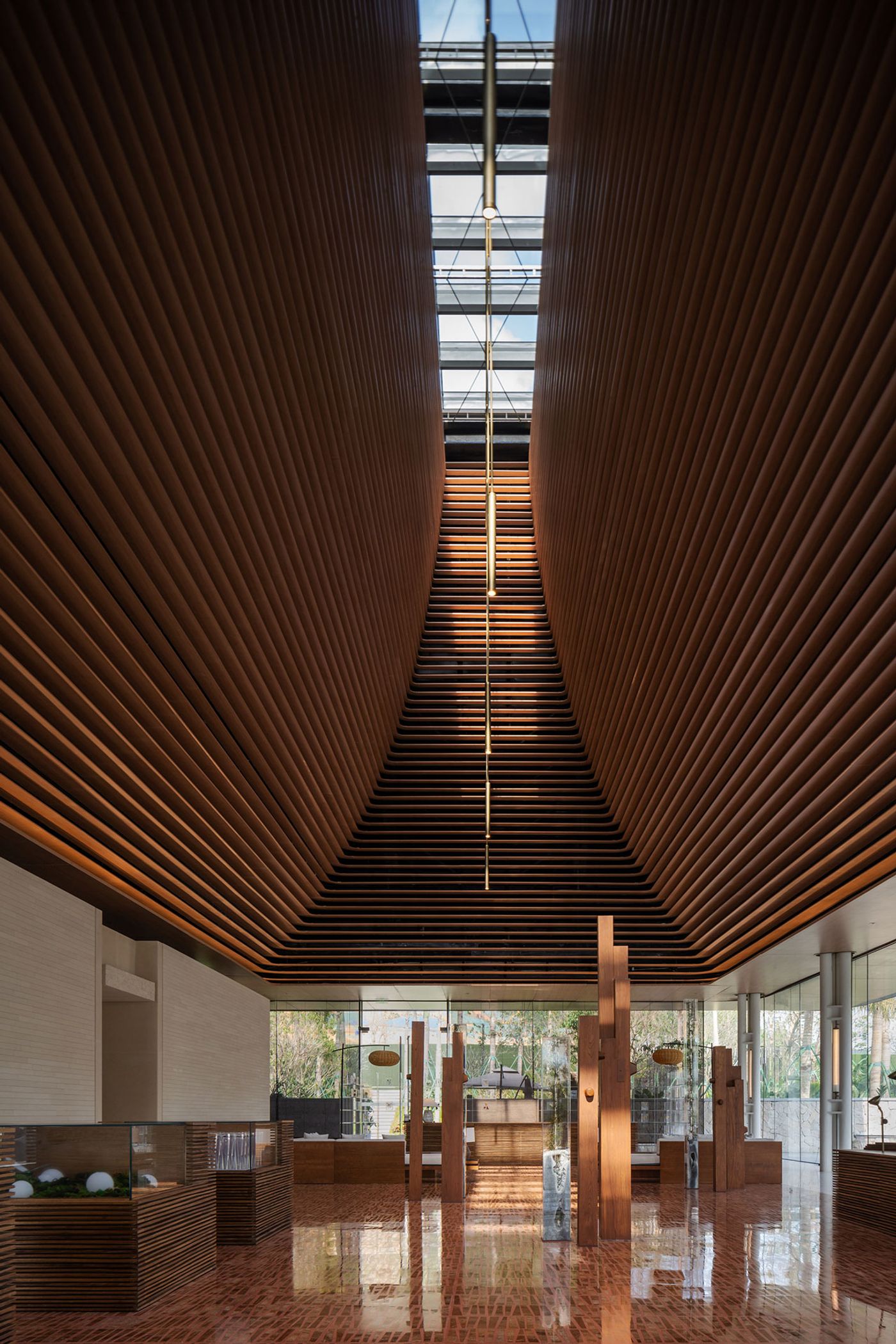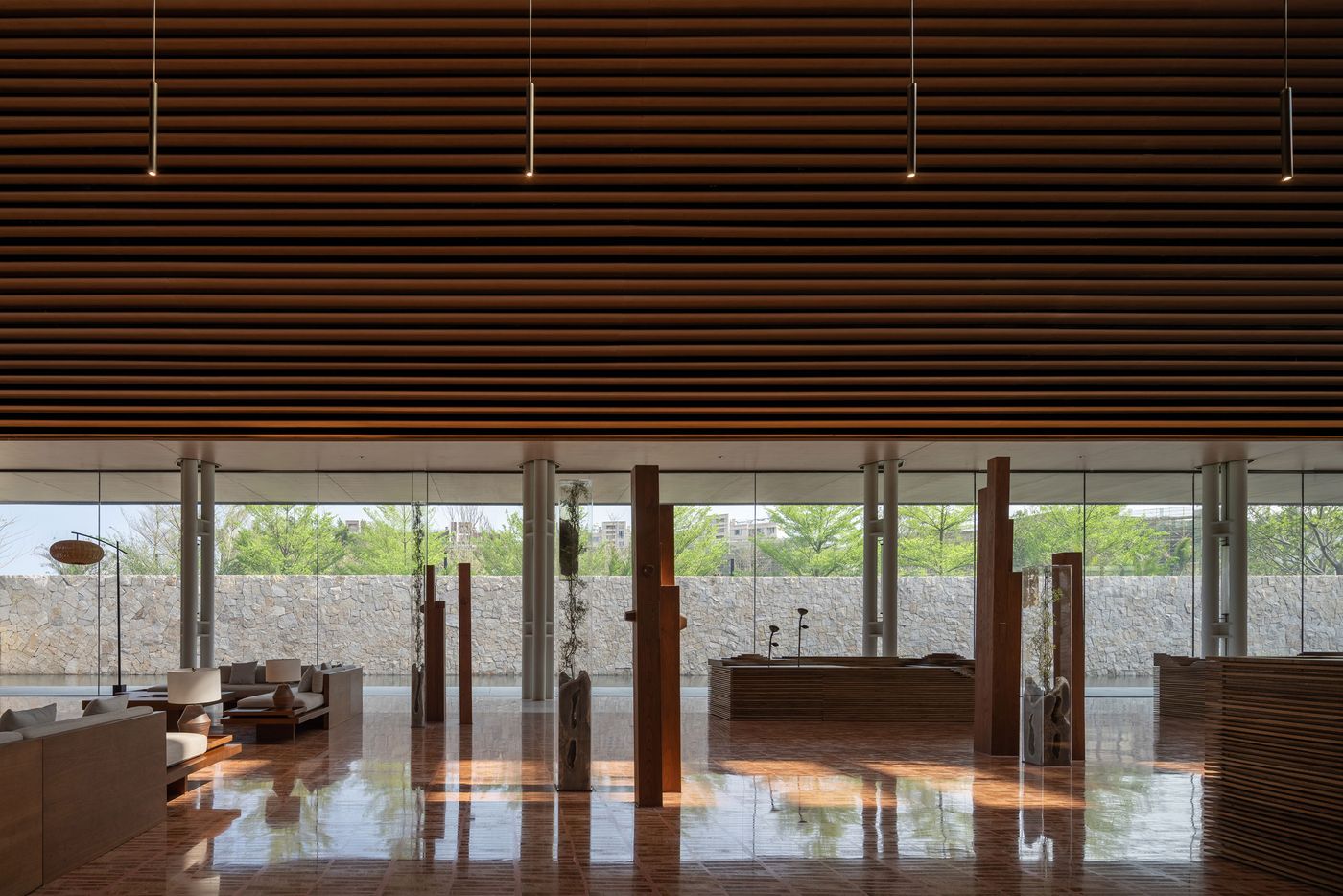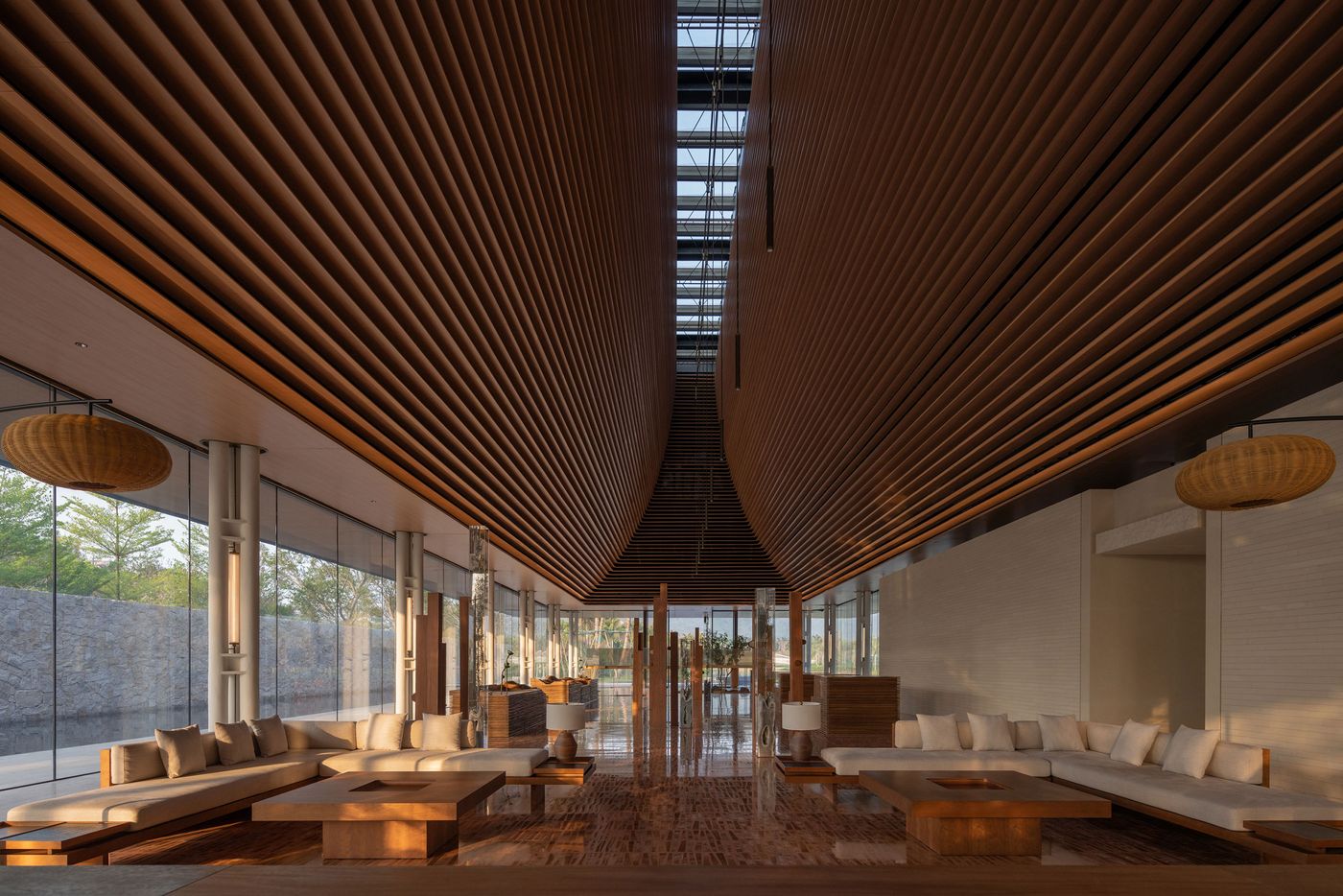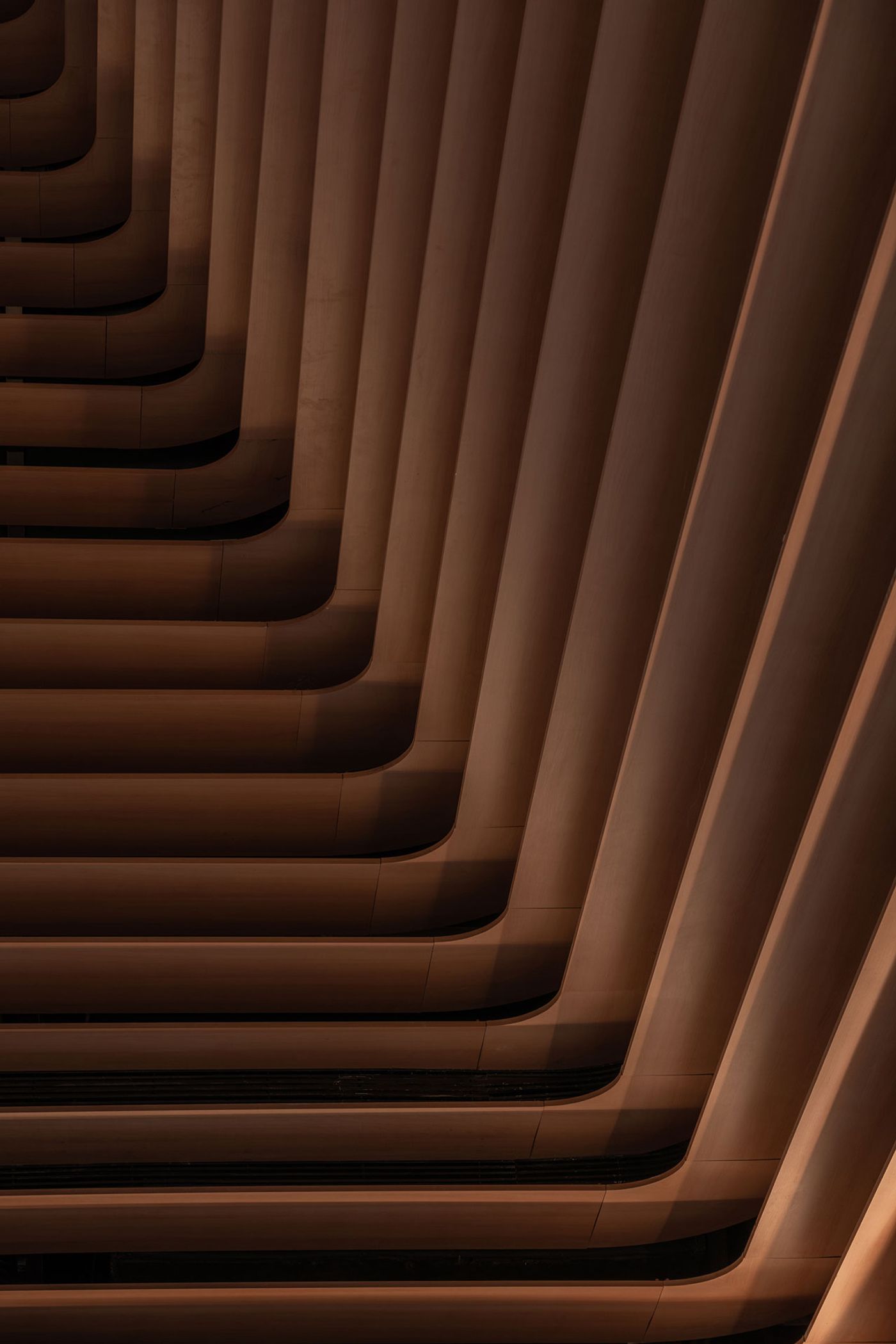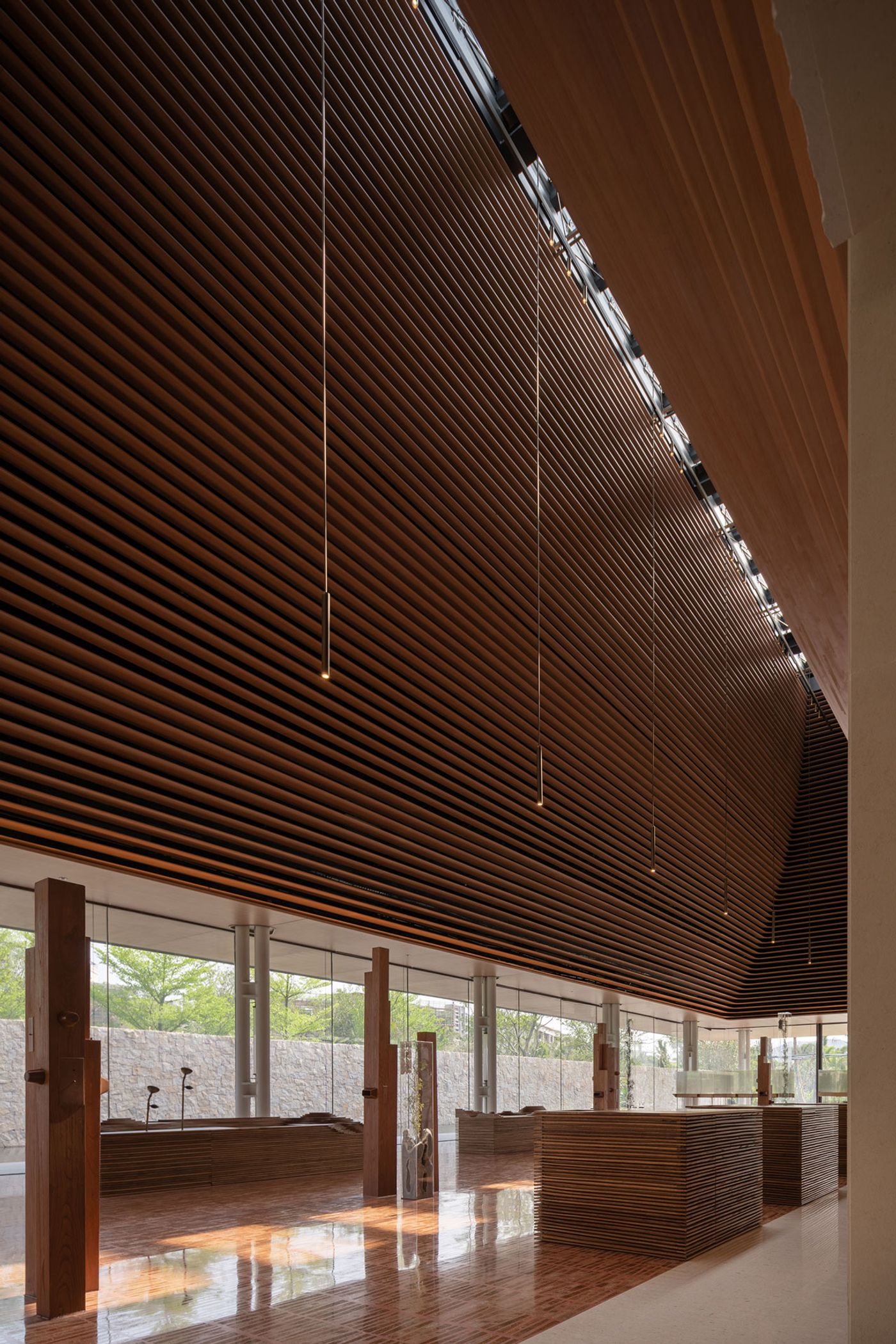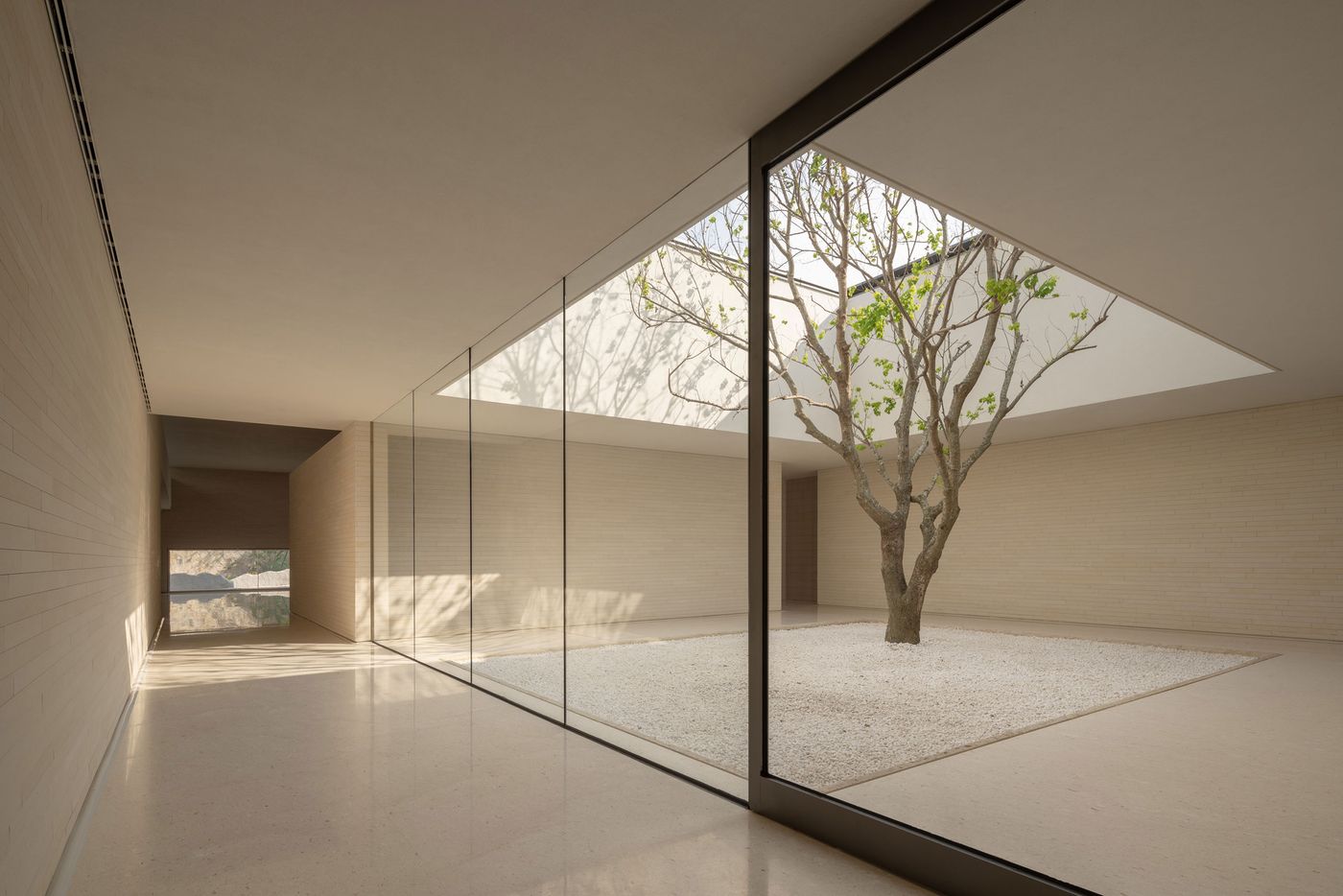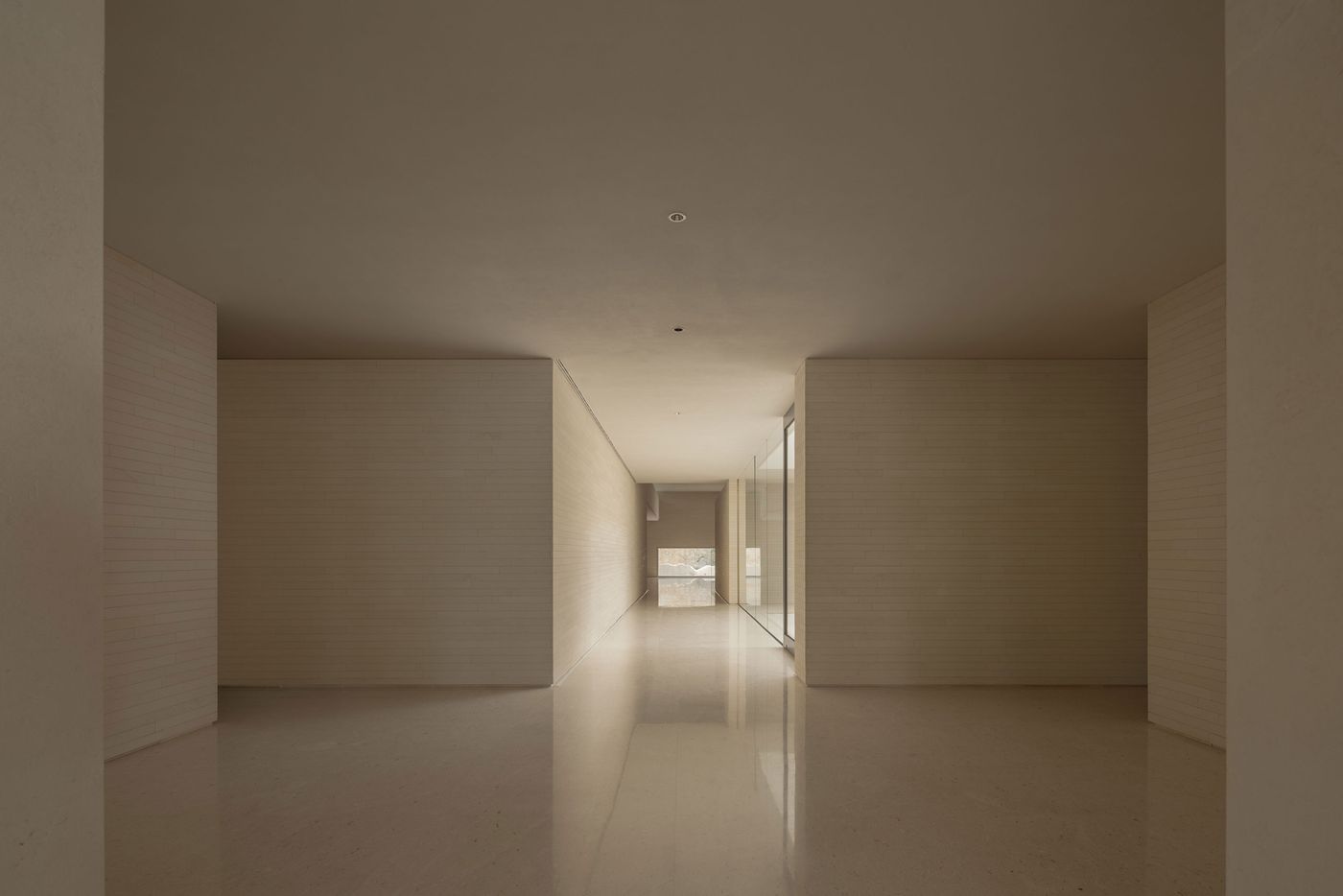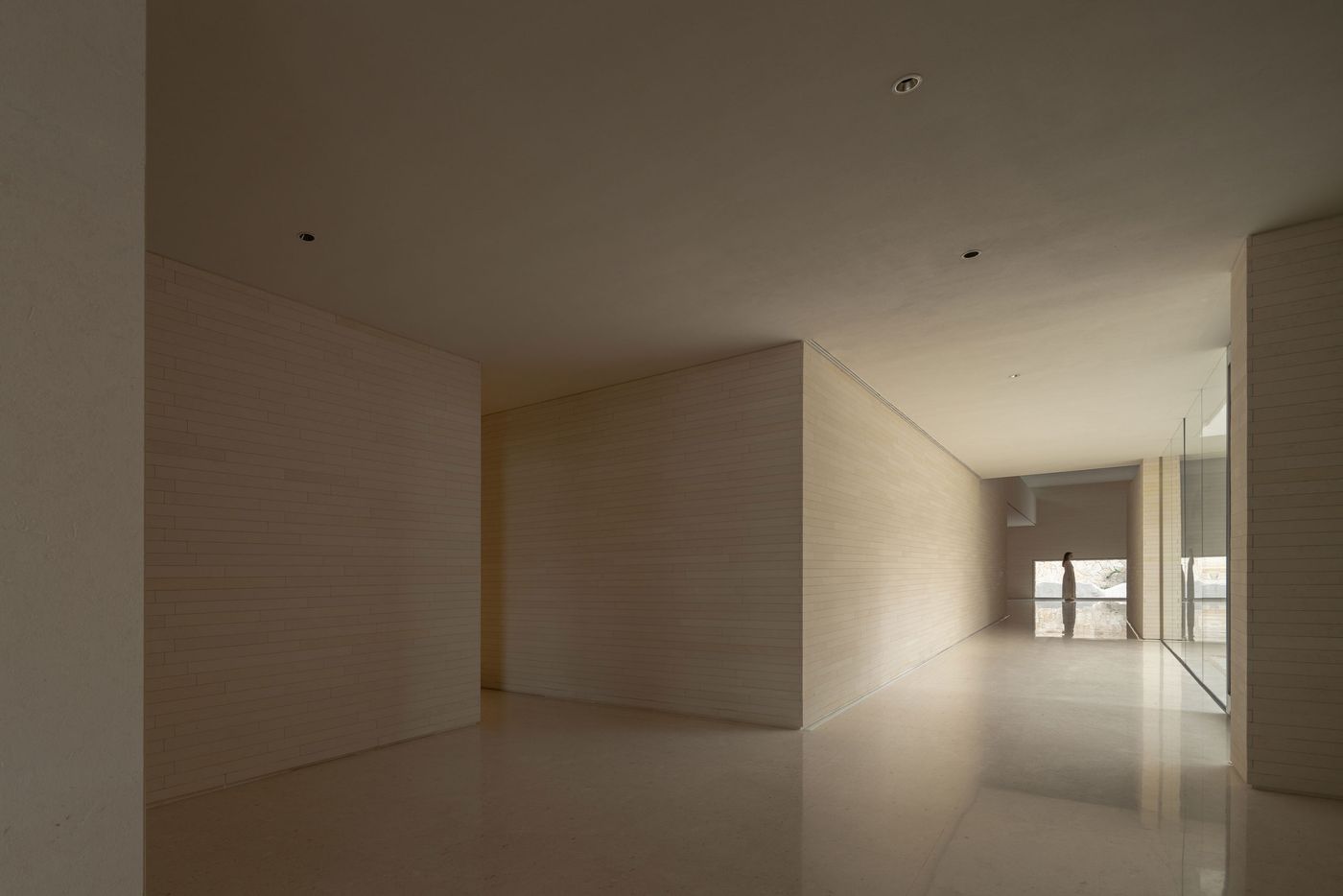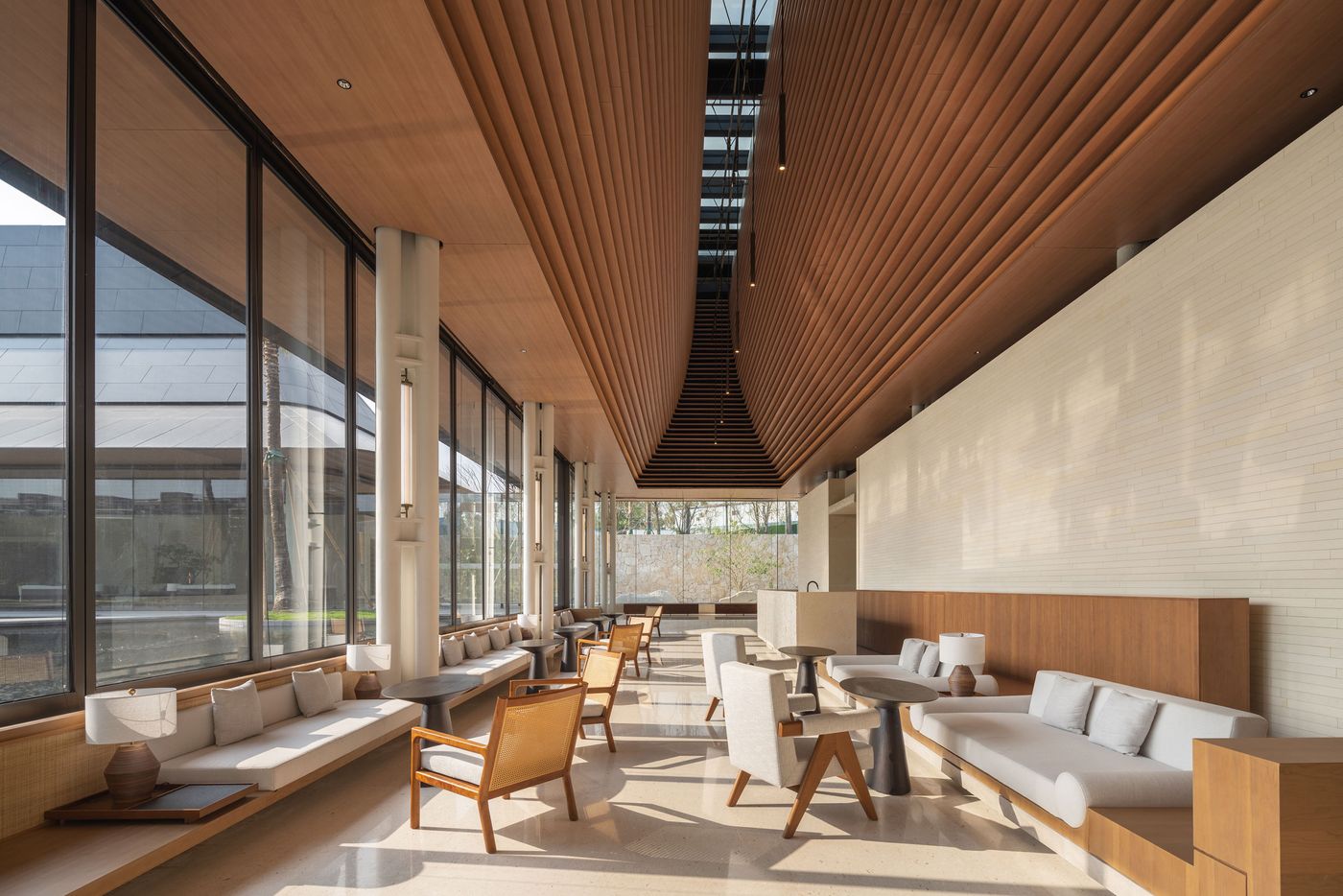
A Contemporary Community Centre in Hainan, China, Channels the Island's Vernacular Heritage
Words by Yatzer
Location
Hainan, China
A Contemporary Community Centre in Hainan, China, Channels the Island's Vernacular Heritage
Words by Yatzer
Hainan, China
Hainan, China
Location
Commissioned to design a sales centre for a new residential development in Shimei Bay on Hainan Island, China, a tropical setting blessed with long sandy beaches and lush forests, Taipei and Shanghai based studio Waterfrom Design combined a contemporary architectural language of minimalist sophistication with a spiritual sensibility inspired by Hainan's vernacular heritage and slow living island lifestyle. Thoroughly modern in aesthetic, the building complex is composed of three interconnected, glass-wrapped pavilions with swooping rooflines that echo the construction of local fishing boats. A fluid layout underpinned by a series of light-filled, open-plan spaces and more intimate, introverted rooms that organically flow into one another was inspired by the island’s traditional communities in anticipation of the building’s conversion into a community hub in the future.

Photography by Vincent Wu.
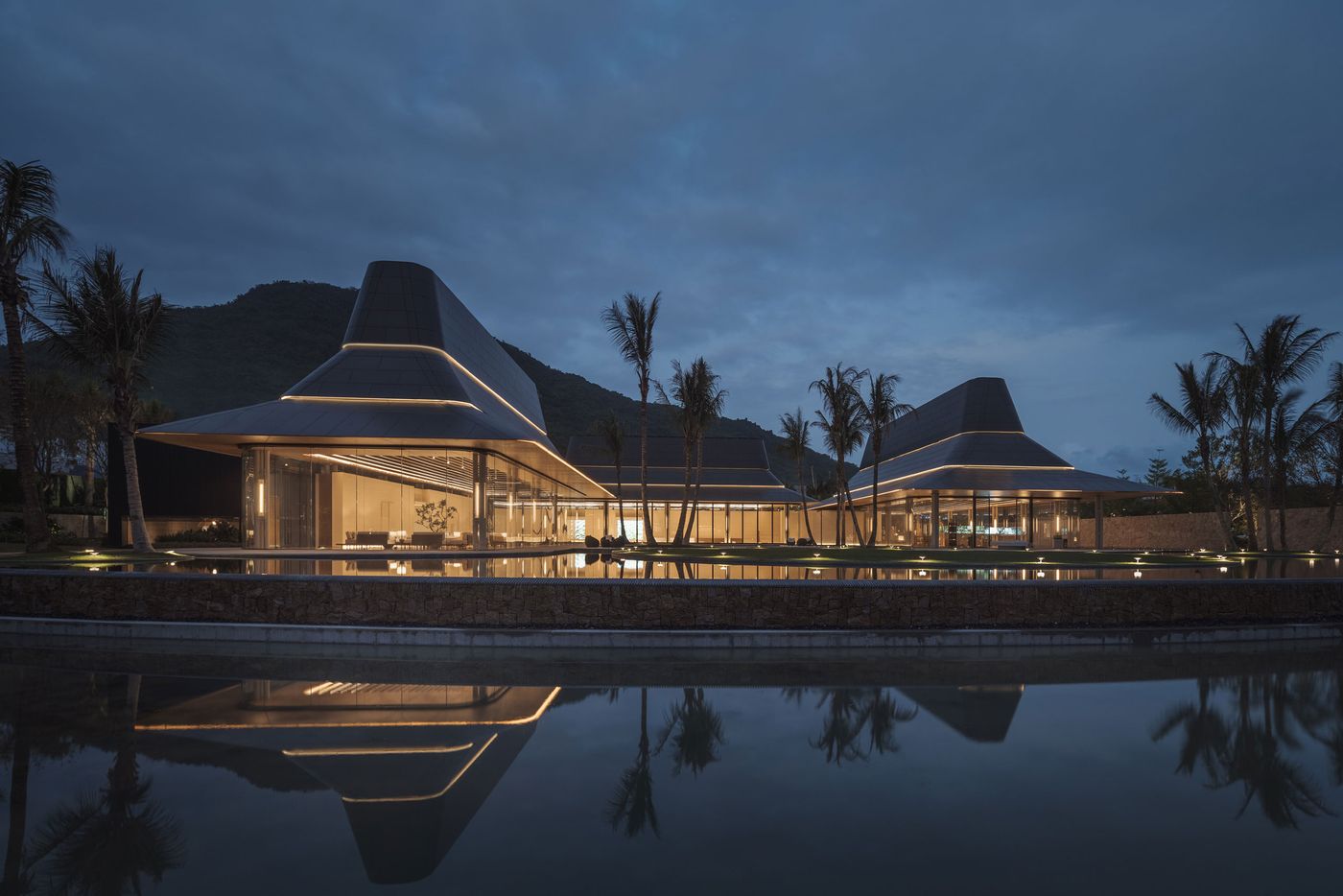
Photography by Vincent Wu.
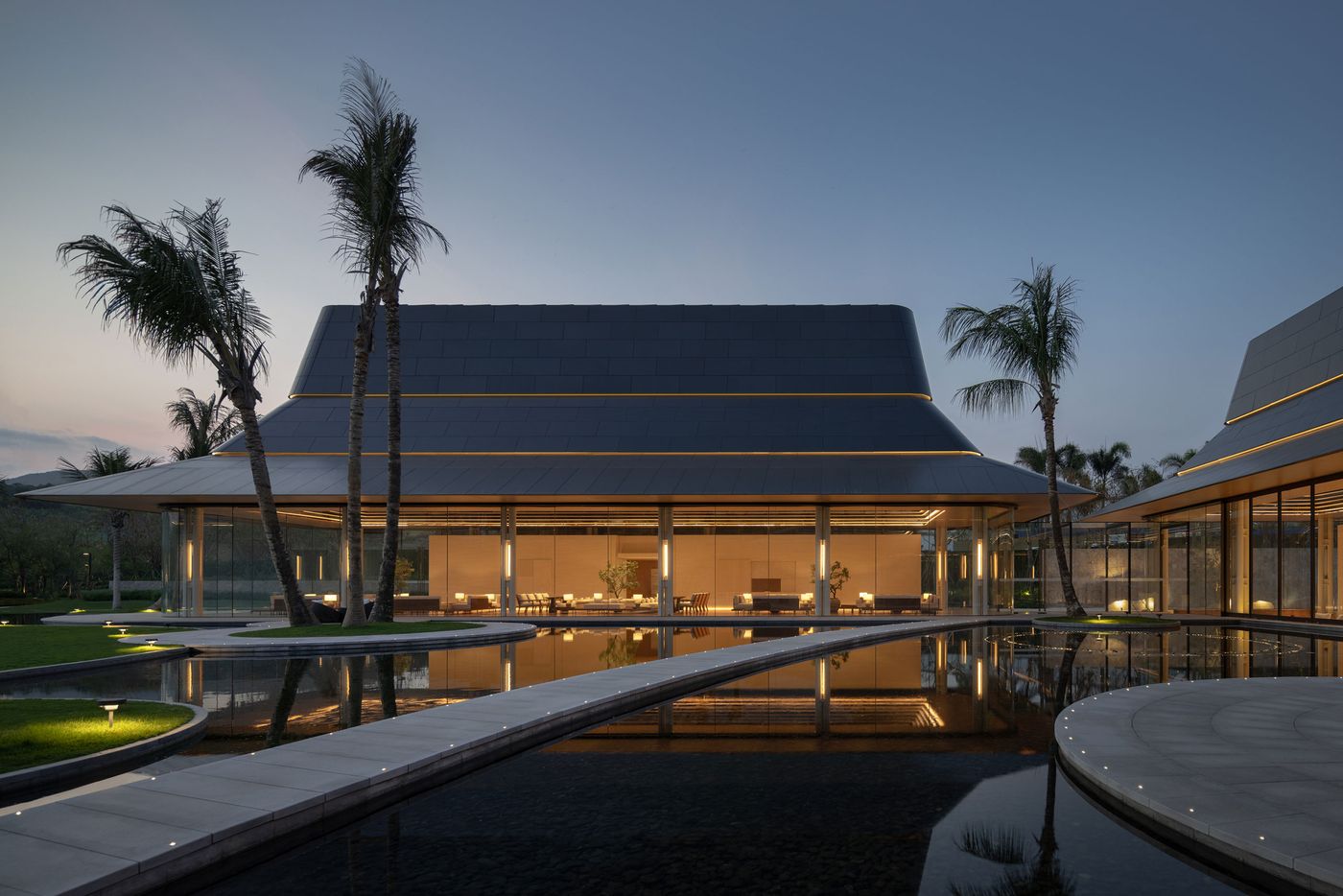
Photography by Vincent Wu.
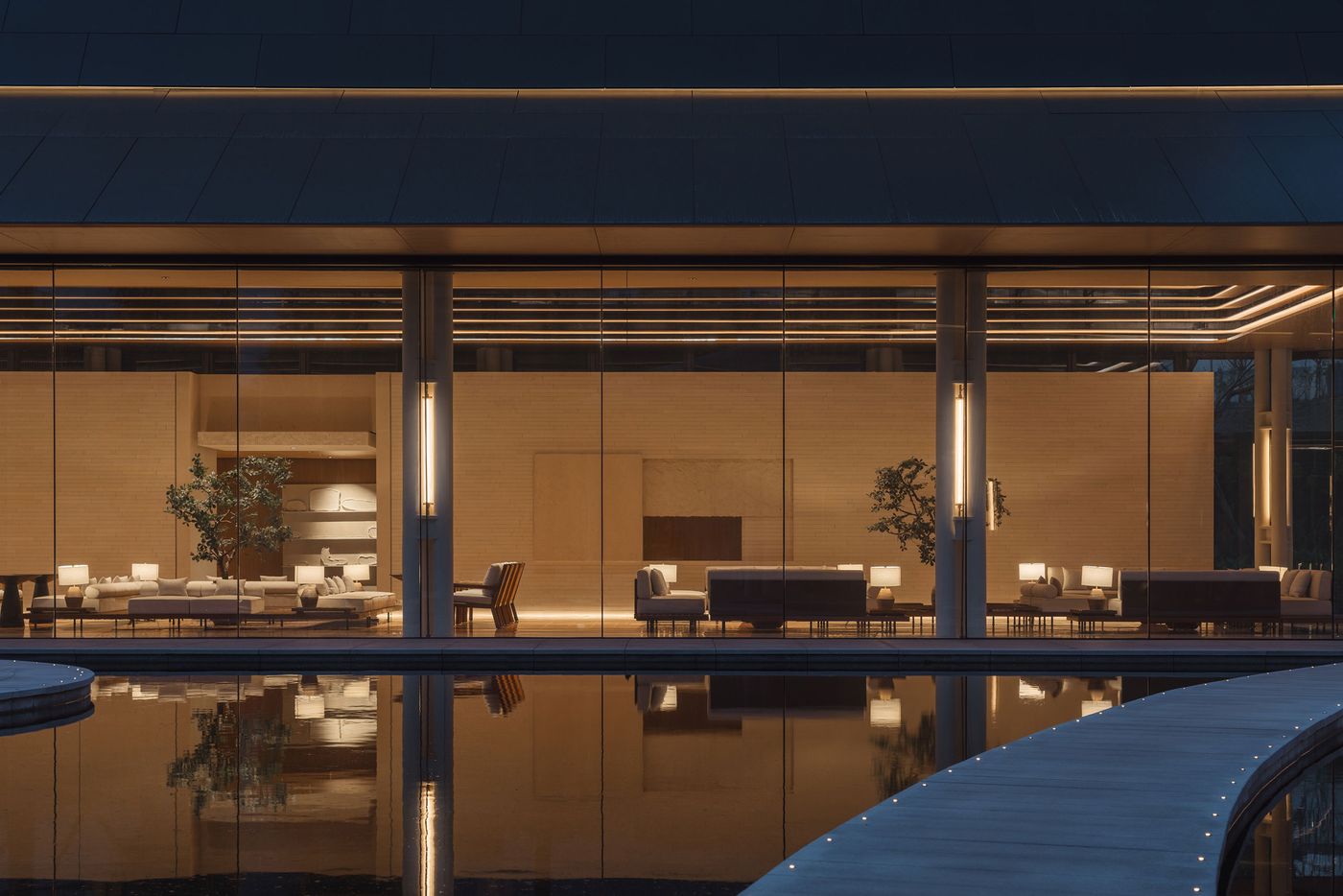
Photography by Vincent Wu.
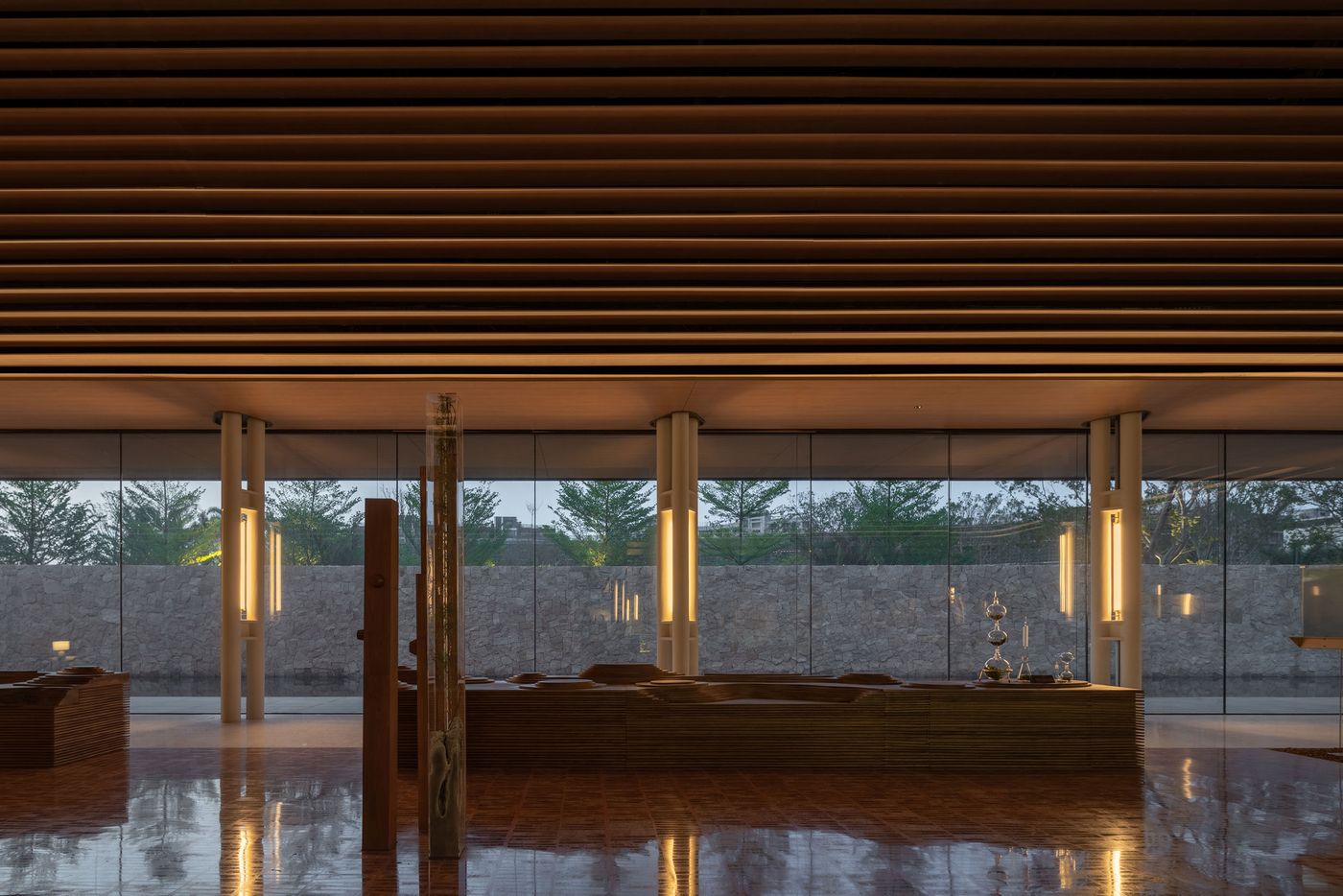
Photography by Vincent Wu.

Photography by Vincent Wu.
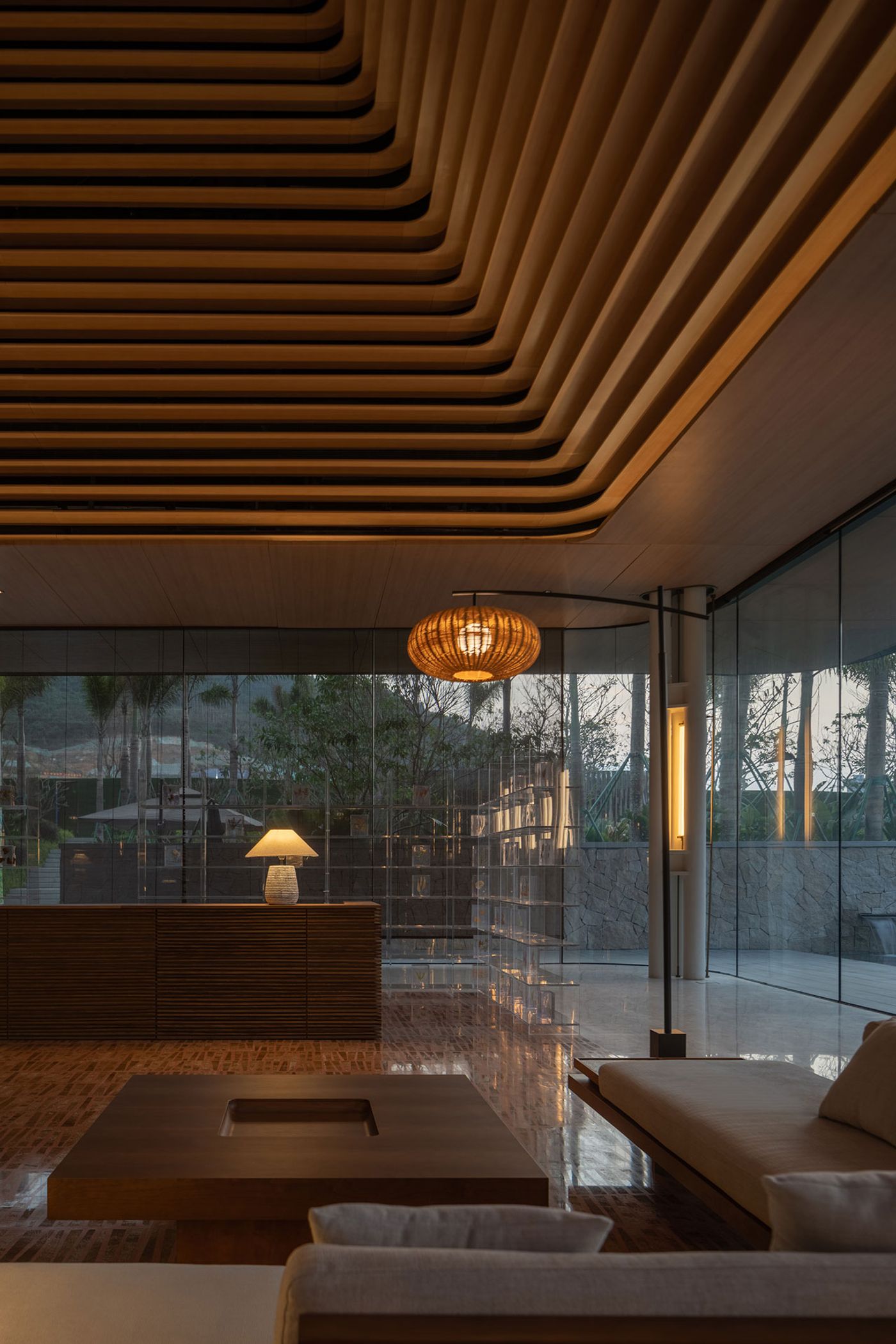
Photography by Vincent Wu.
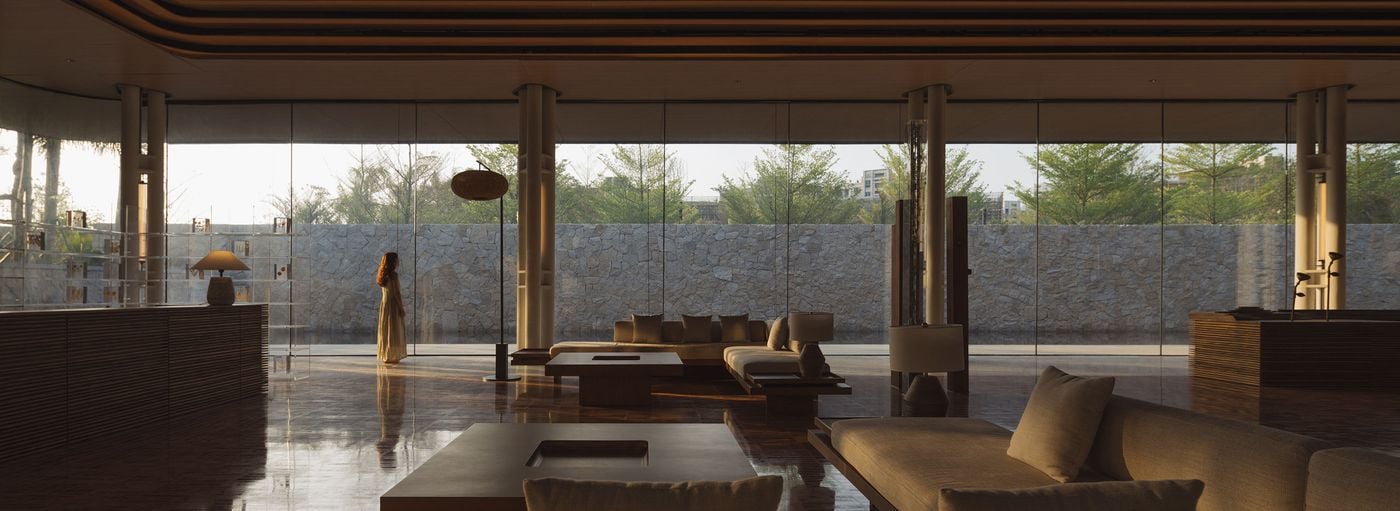
Photography by Vincent Wu.
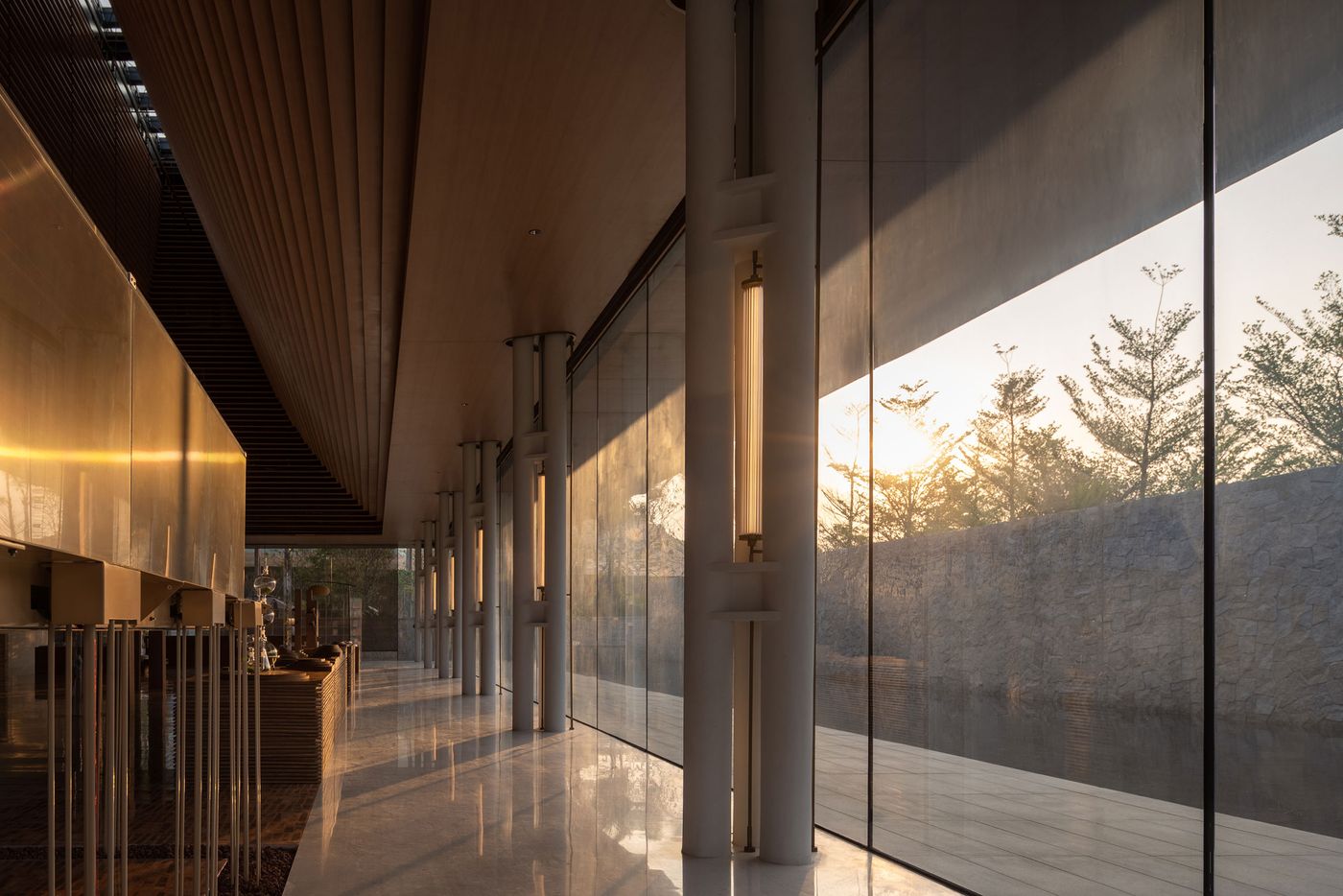
Photography by Vincent Wu.
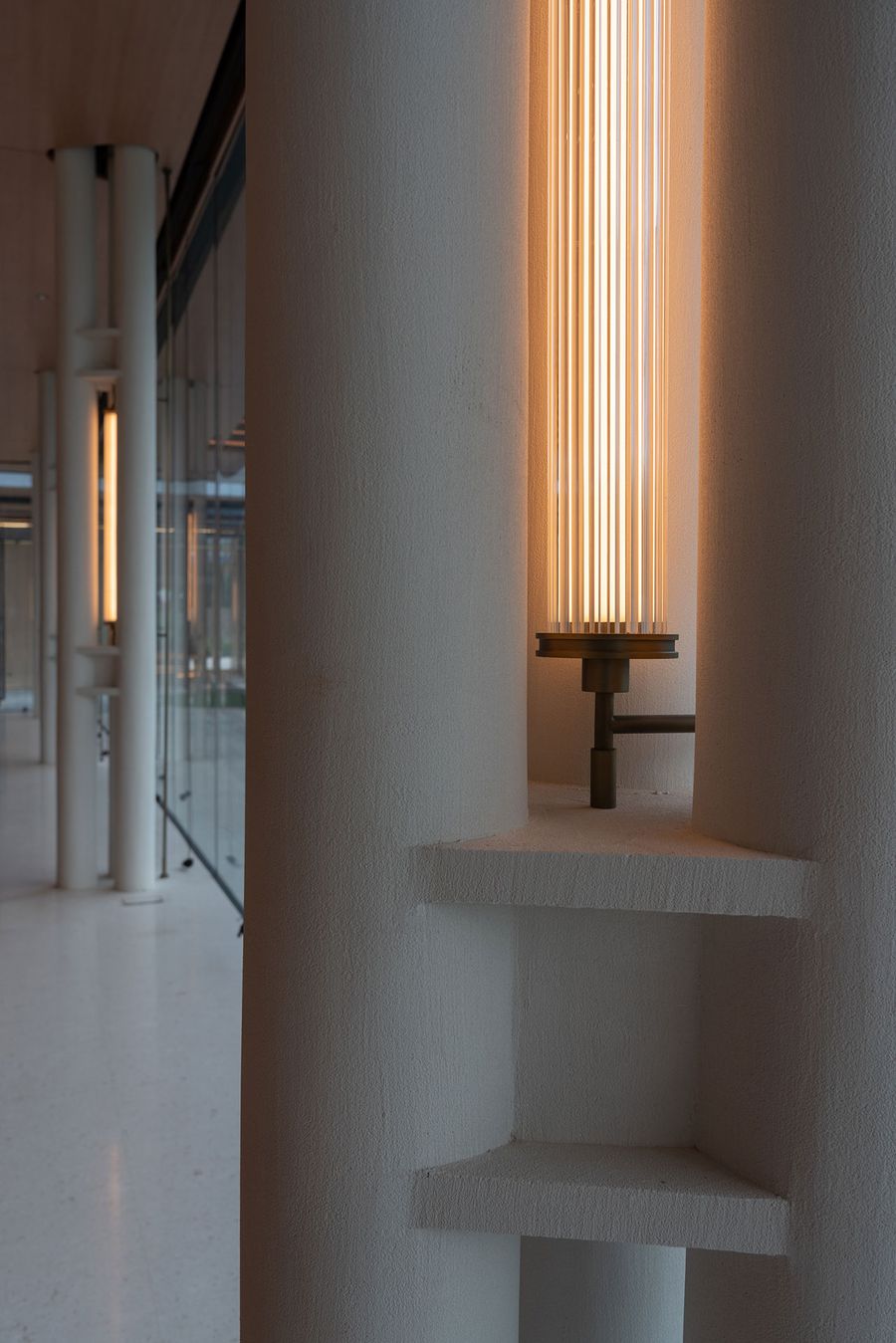
Photography by Vincent Wu.
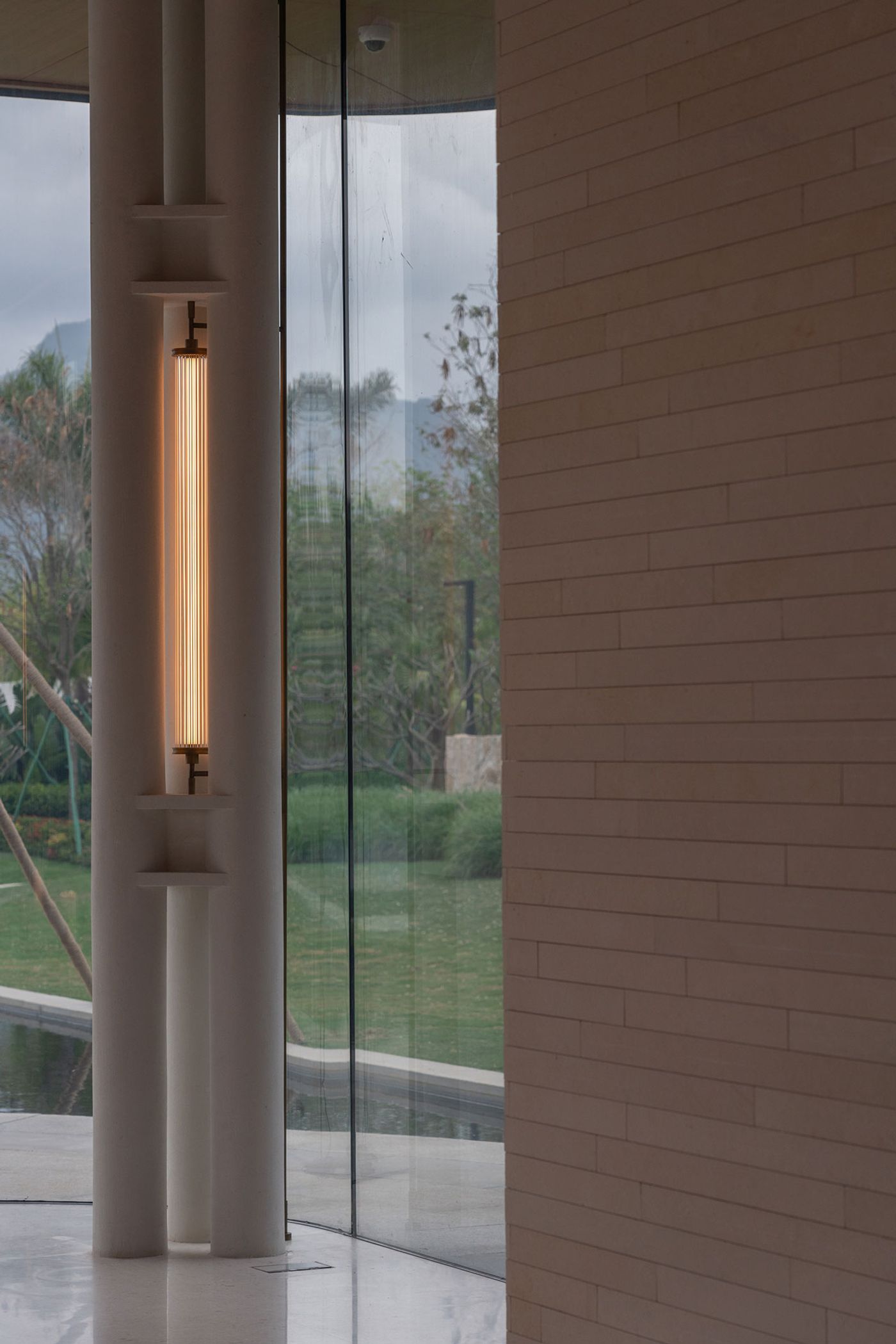
Photography by Vincent Wu.
It was important for the architects to establish an intimate relationship between the building and the surrounding landscape to reflect both the real estate development’s sustainability ethos and the role of nature in the island’s authentic lifestyle. To do so, they designed three interconnected pavilions wrapped for the most part in glass and centred on a landscaped courtyard featuring a series of reflecting ponds. Frameless glass panels that form continuous elevations with rounded corners blur the boundary between inside and outside as well as allow views between the three buildings further enhancing the sense of communal living whilst also giving the impression that the pavilions’ bonnet roofs magically hover above the ground.
Mixing traditional and modern architectural typologies, the architects have paired the sinuous glass facades with bonnet roofs designing what can only be described as futuristic huts. Dramatic as they seem, the sloping roof shapes also serve practical purposes with a linear skylight running along the top designed to facilitate natural ventilation and increase natural lighting penetration.
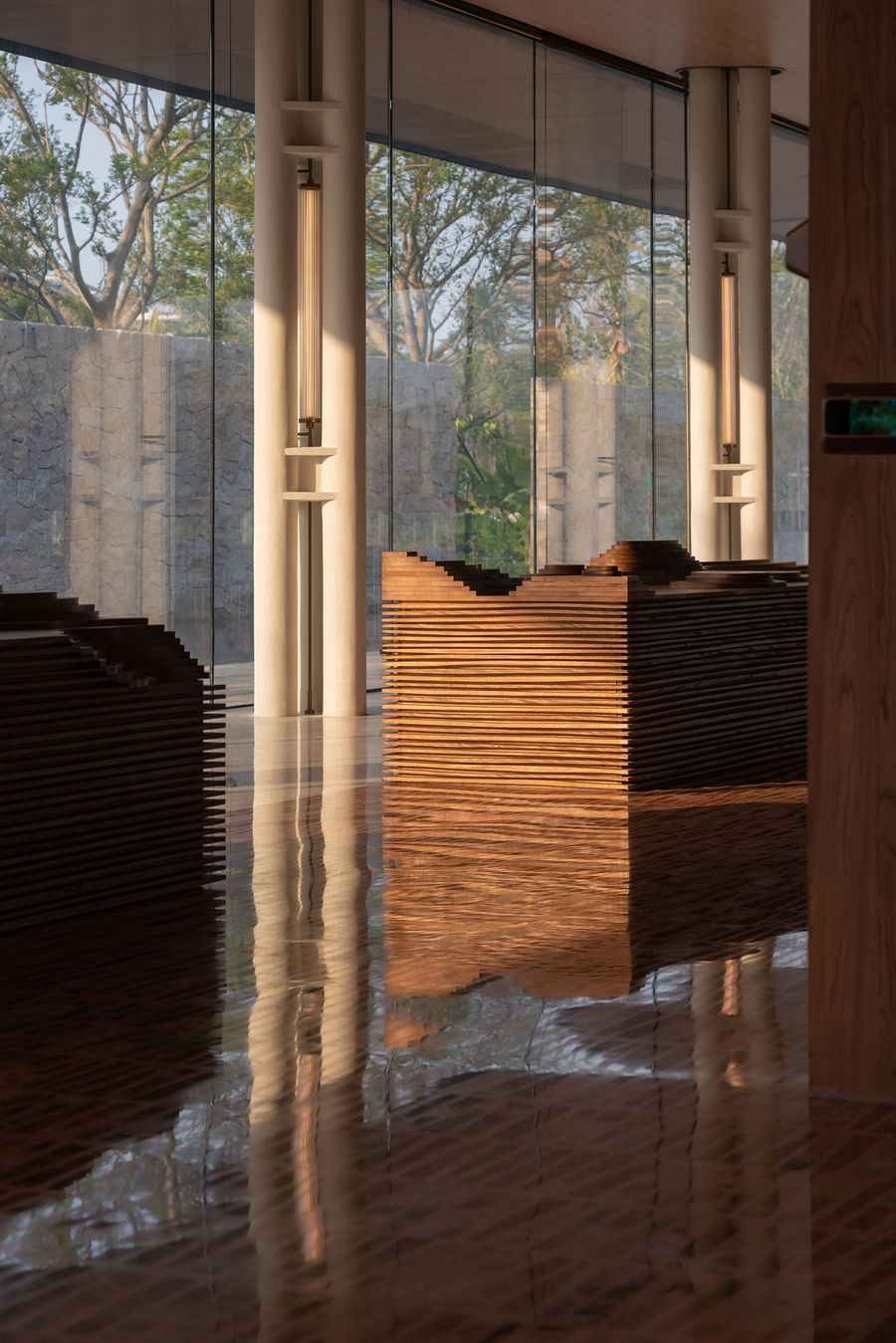
Photography by Vincent Wu.
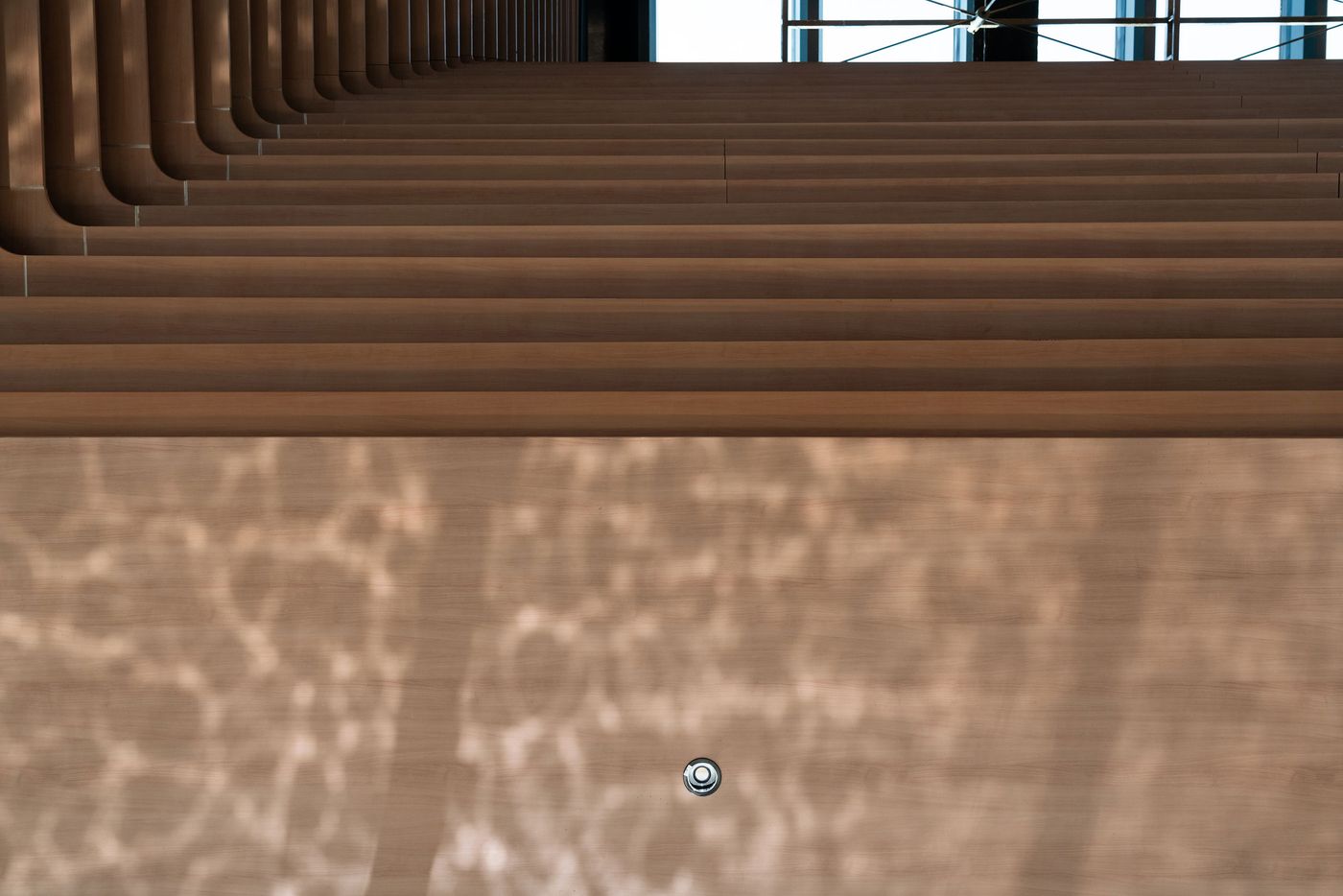
Photography by Vincent Wu.
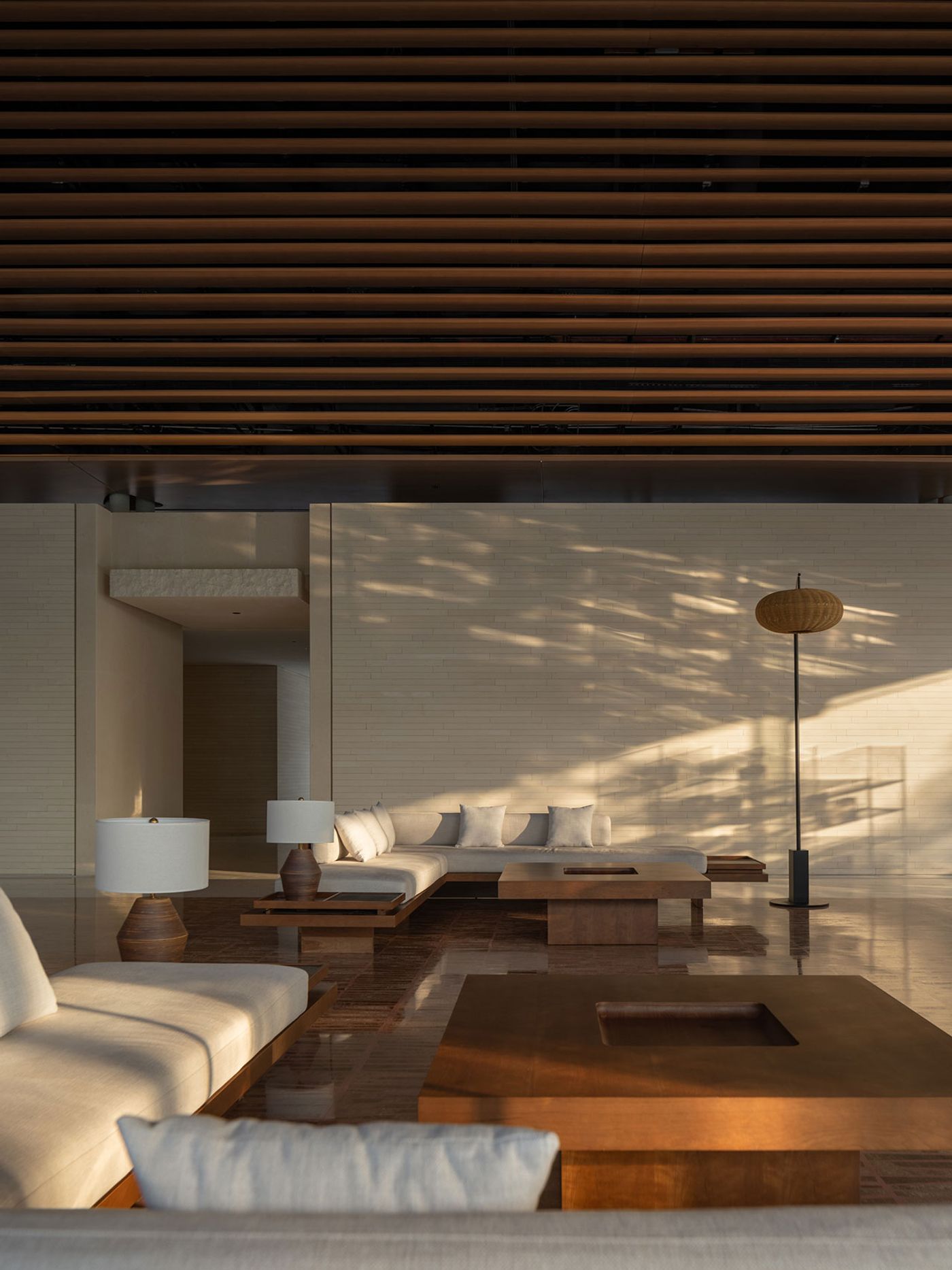
Photography by Vincent Wu.
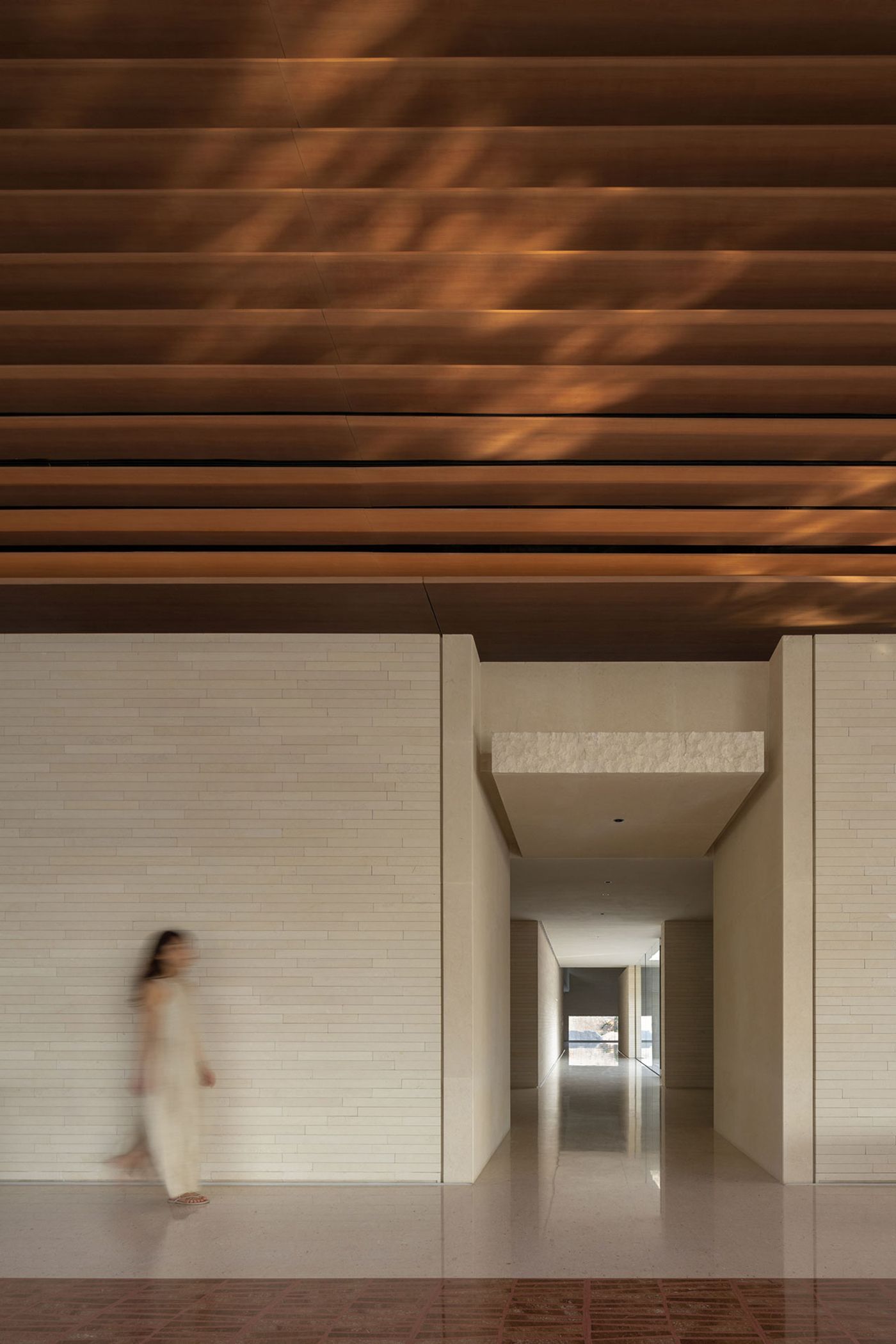
Photography by Vincent Wu.
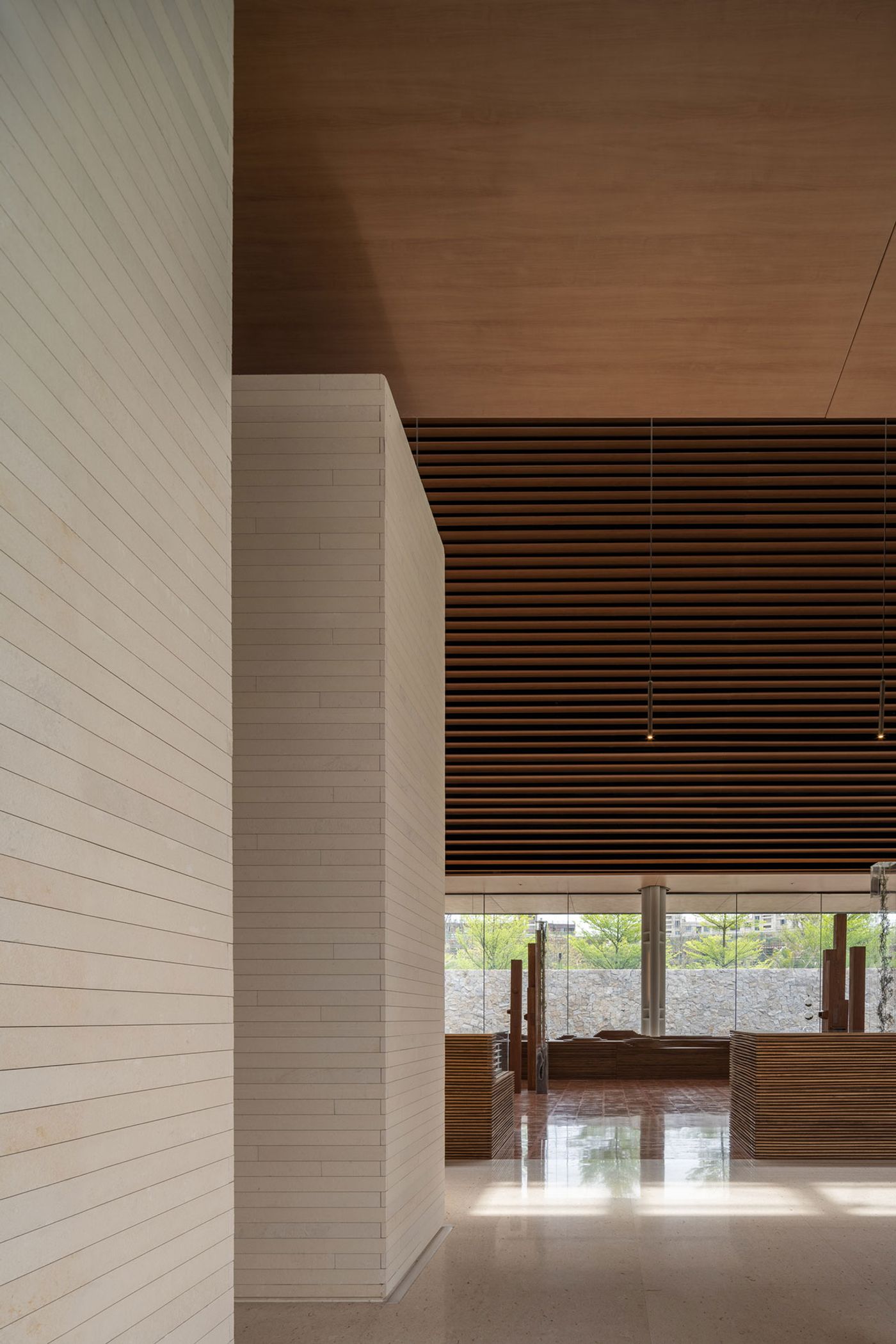
Photography by Vincent Wu.
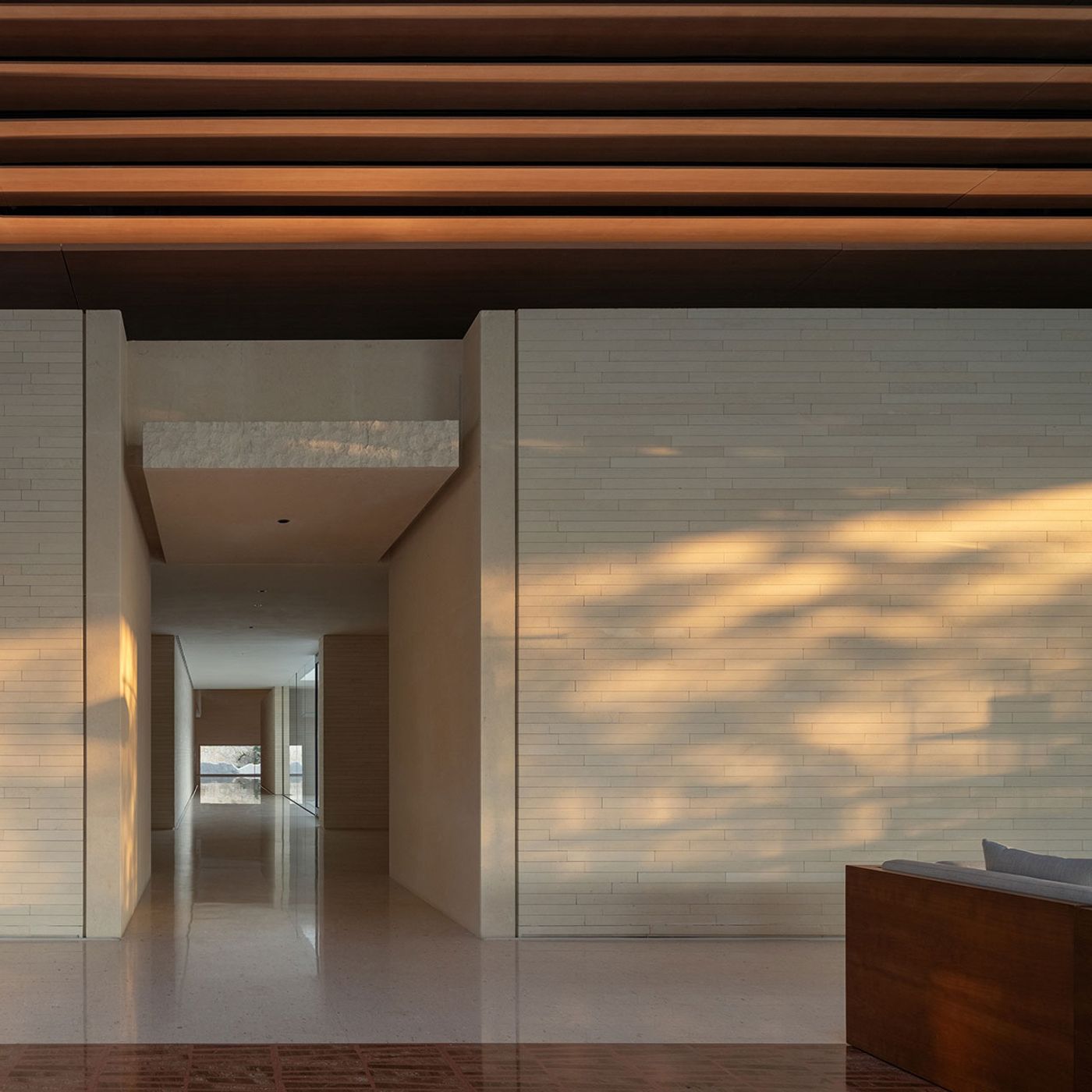
Photography by Vincent Wu.

Photography by Vincent Wu.

Photography by Vincent Wu.
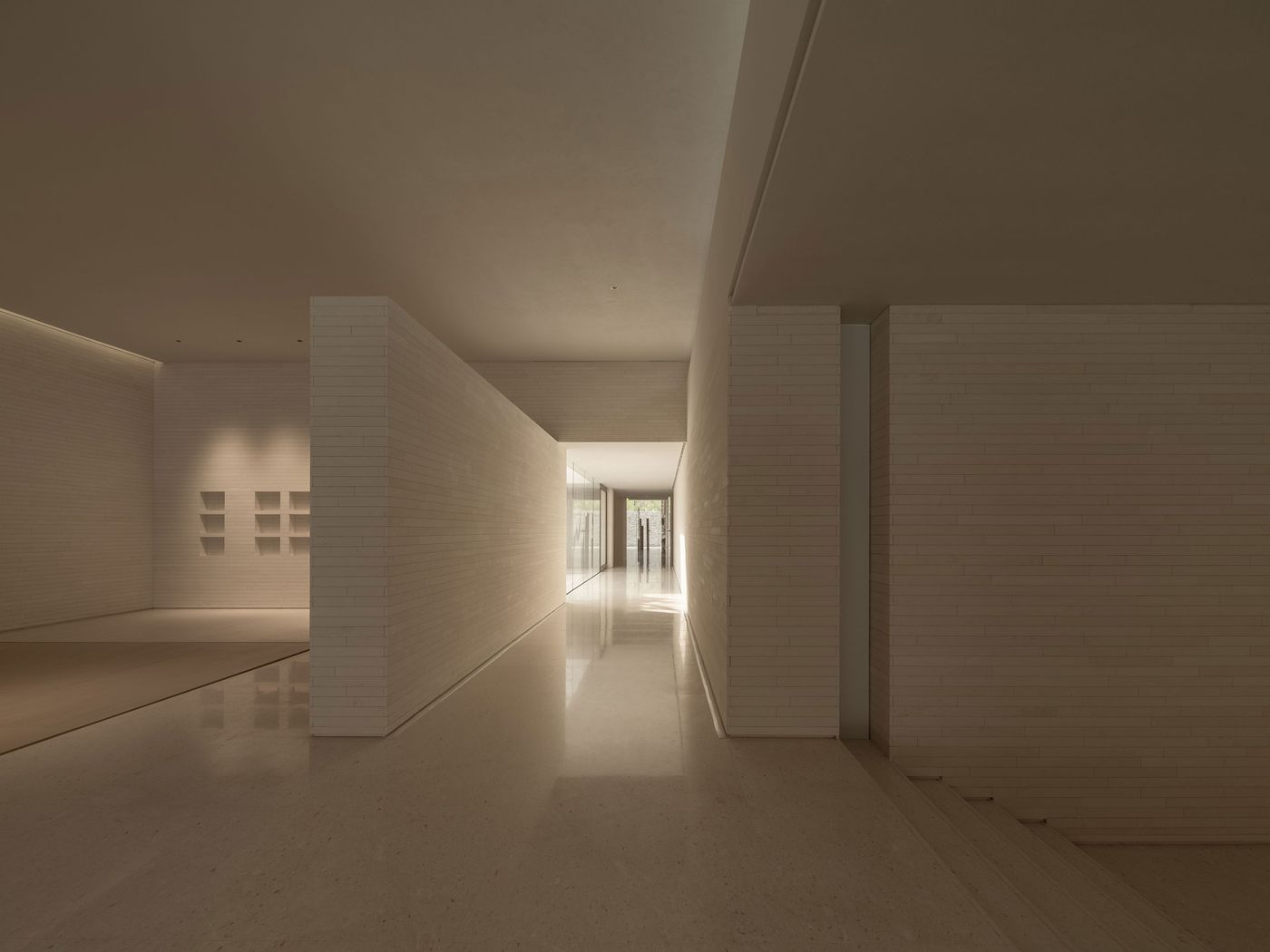
Photography by Vincent Wu.
Stepping inside the building complex, a spacious open-plan space with views on three sides is used as a reception and a gallery space. Marble and terrazzo surfaces combined with bespoke furnishings made from cherry wood and rosewood, including sculptural display podiums, imbue the space with a sense of minimalist elegance while conjuring the island’s natural landscape, as does the swooping shape of the timber roofing. Currently housing an exhibition of indigenous plants and minerals, once the venue is turned into a community hub, the space will host community events and exhibitions.
A sprawling café in the adjacent pavilion enjoys wide views of the reflecting ponds while in the back an exhibition space with minimal natural lighting, courtesy of an internal courtyard, was designed to host video projections and potentially serve as a movie theatre. Finally, the third pavilion houses a spacious lounge and bar area, playroom and kitchen, plus intimate meeting spaces that can be turned into tea rooms in the future. A palette of natural materials such as wood, marble, clay and rattan balance the minimalist design with rich textures whilst underlying the project’s intimacy with Hainan’s natural landscape and craft heritage.
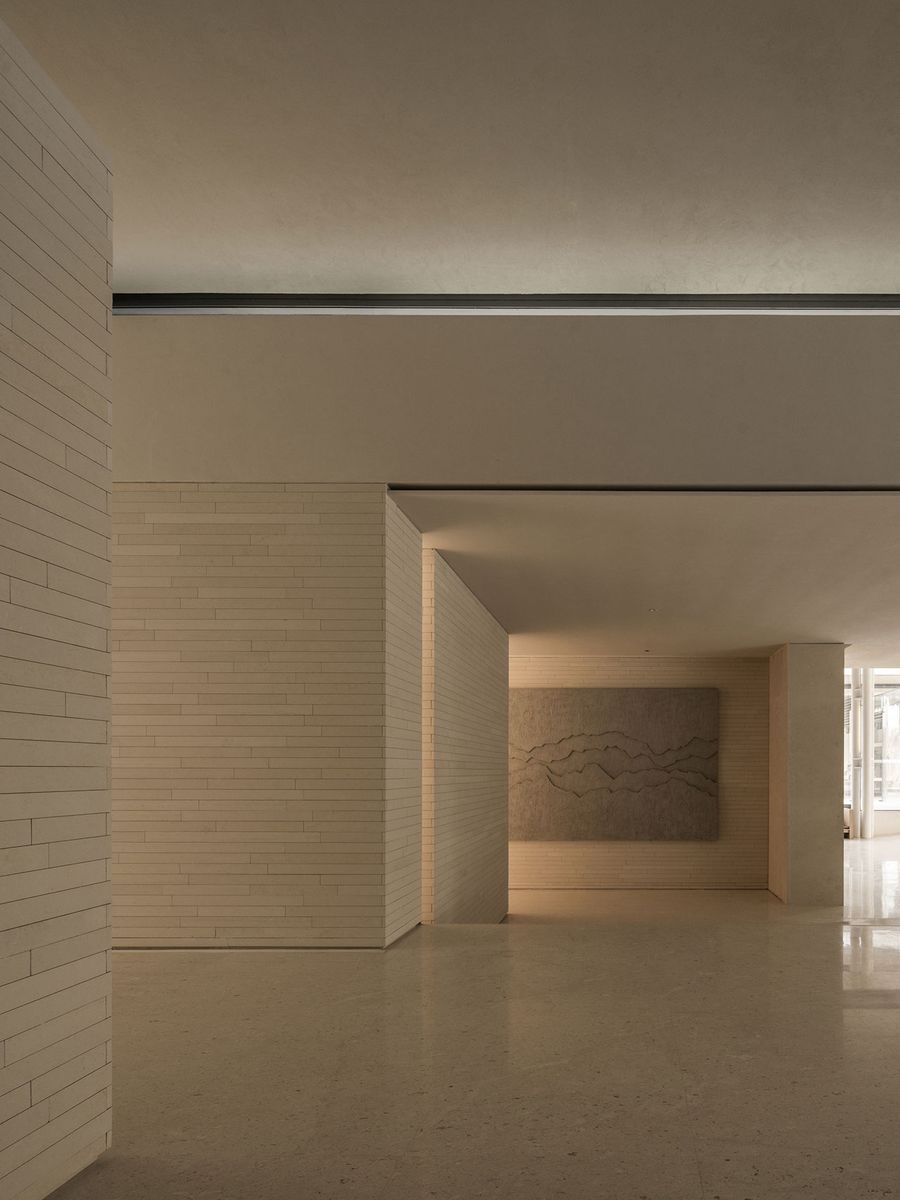
Photography by Vincent Wu.
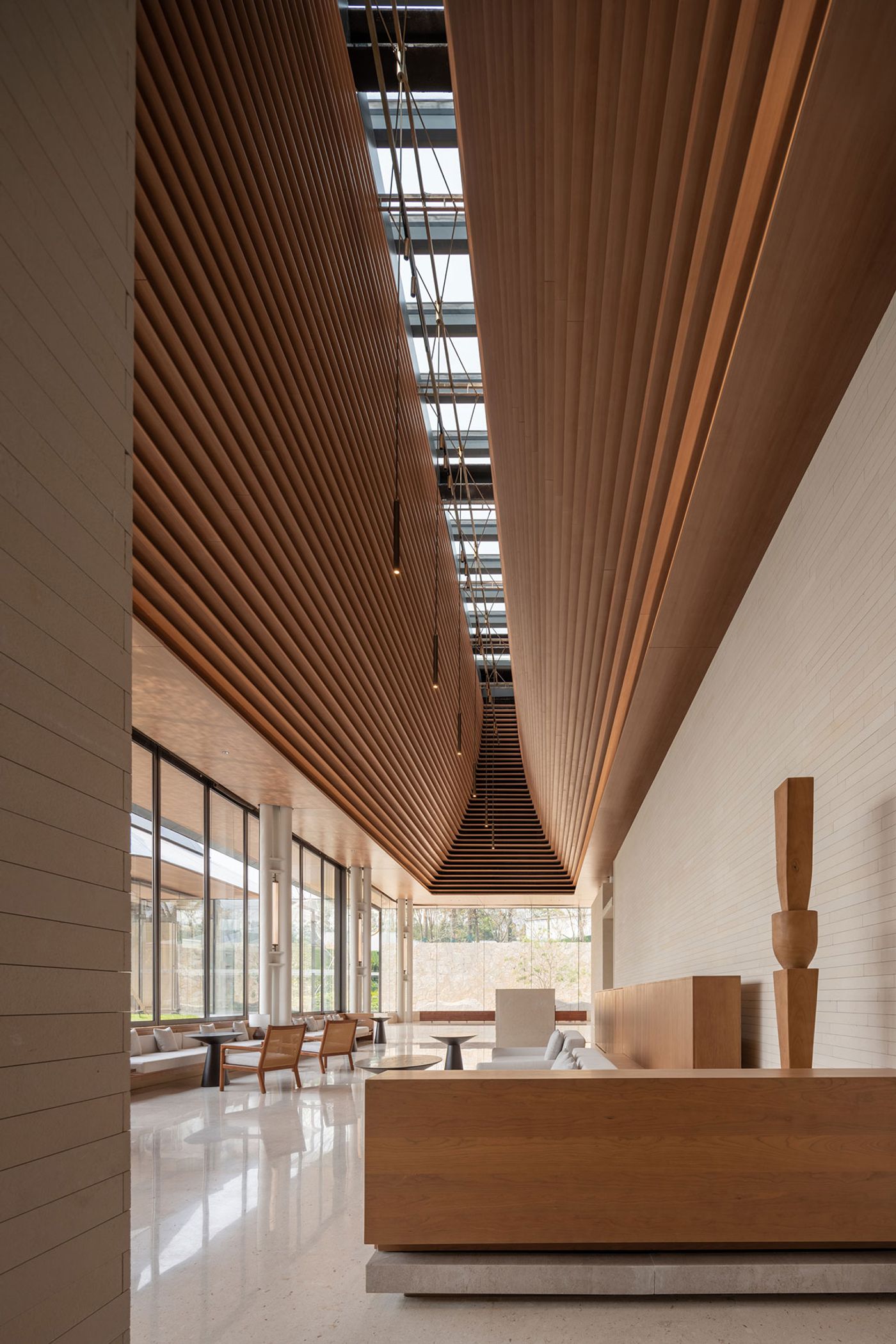
Photography by Vincent Wu.
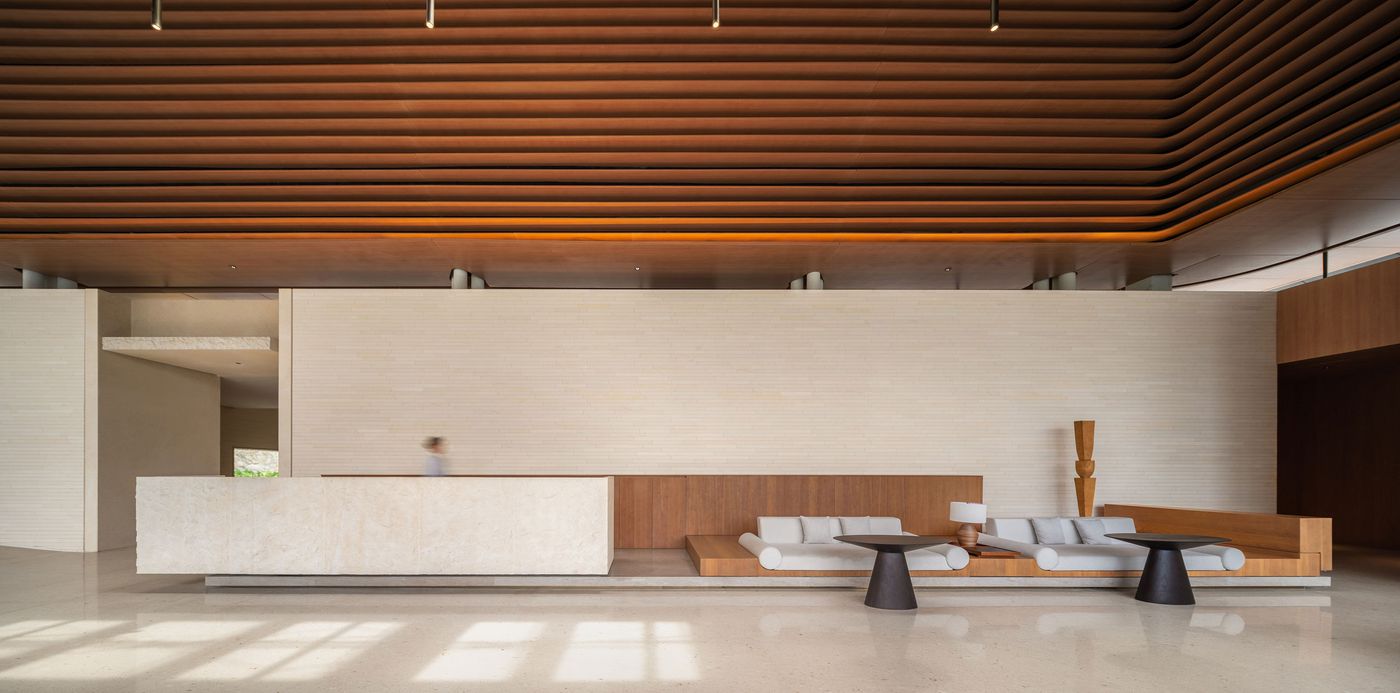
Photography by Vincent Wu.
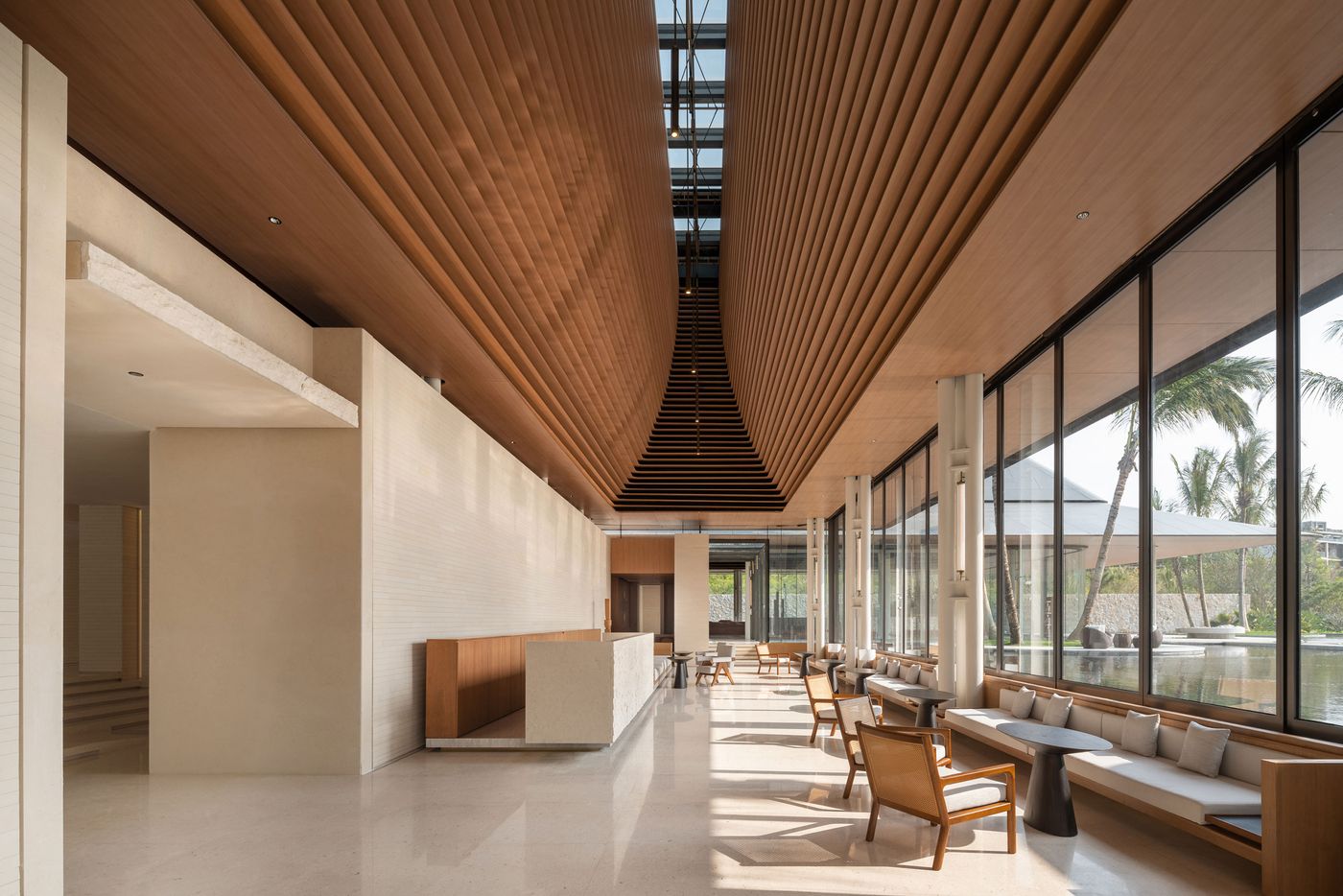
Photography by Vincent Wu.
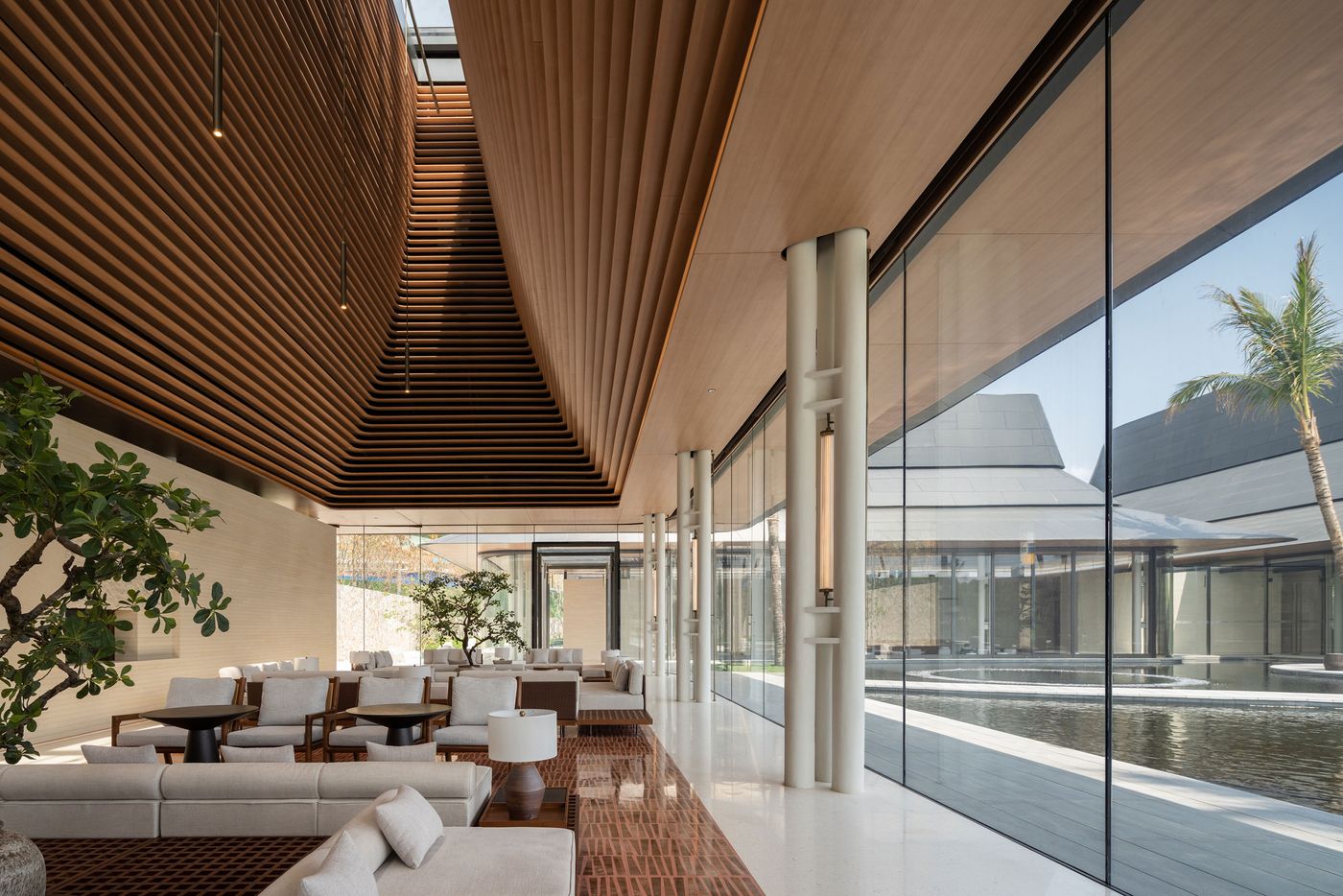
Photography by Vincent Wu.
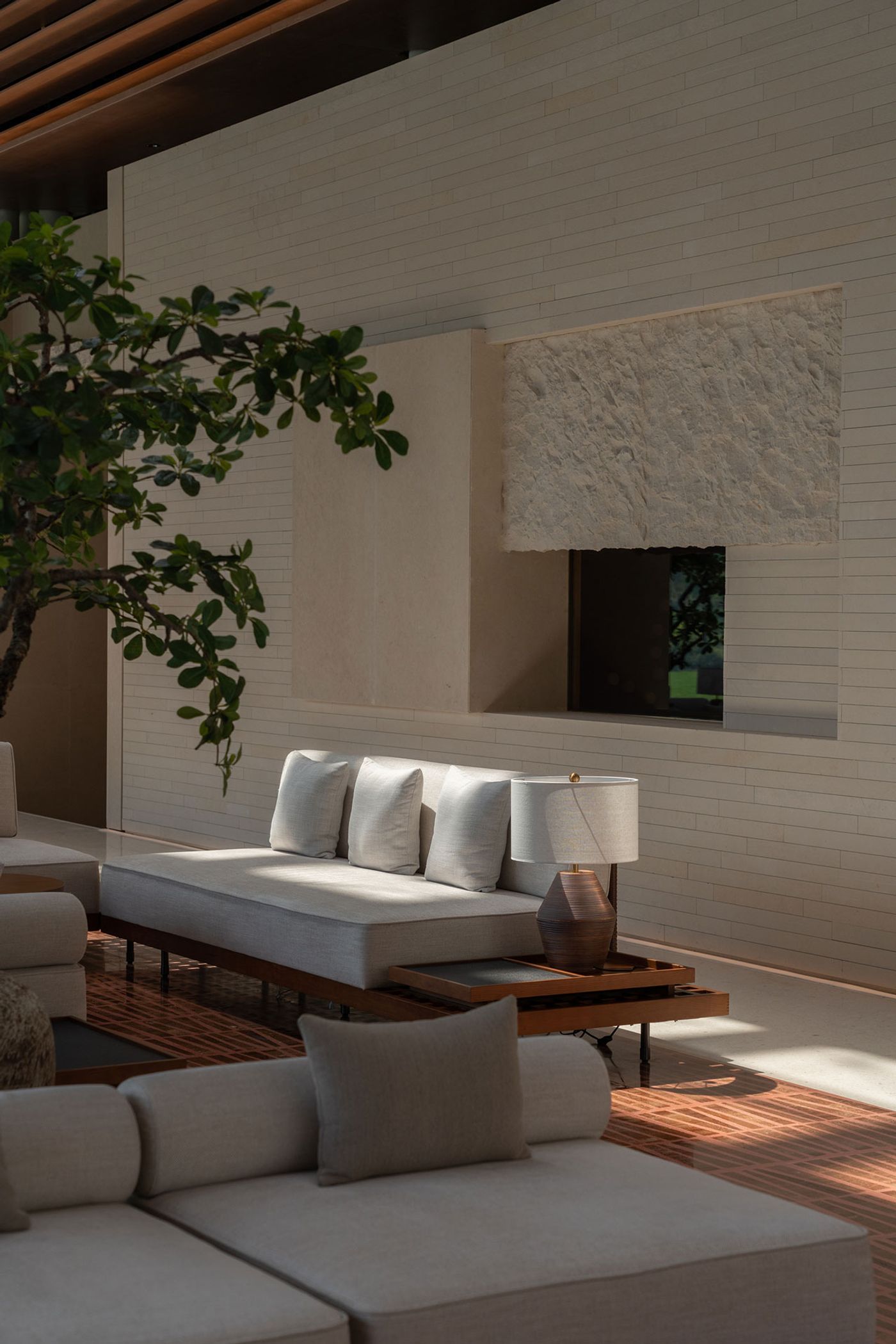
Photography by Vincent Wu.
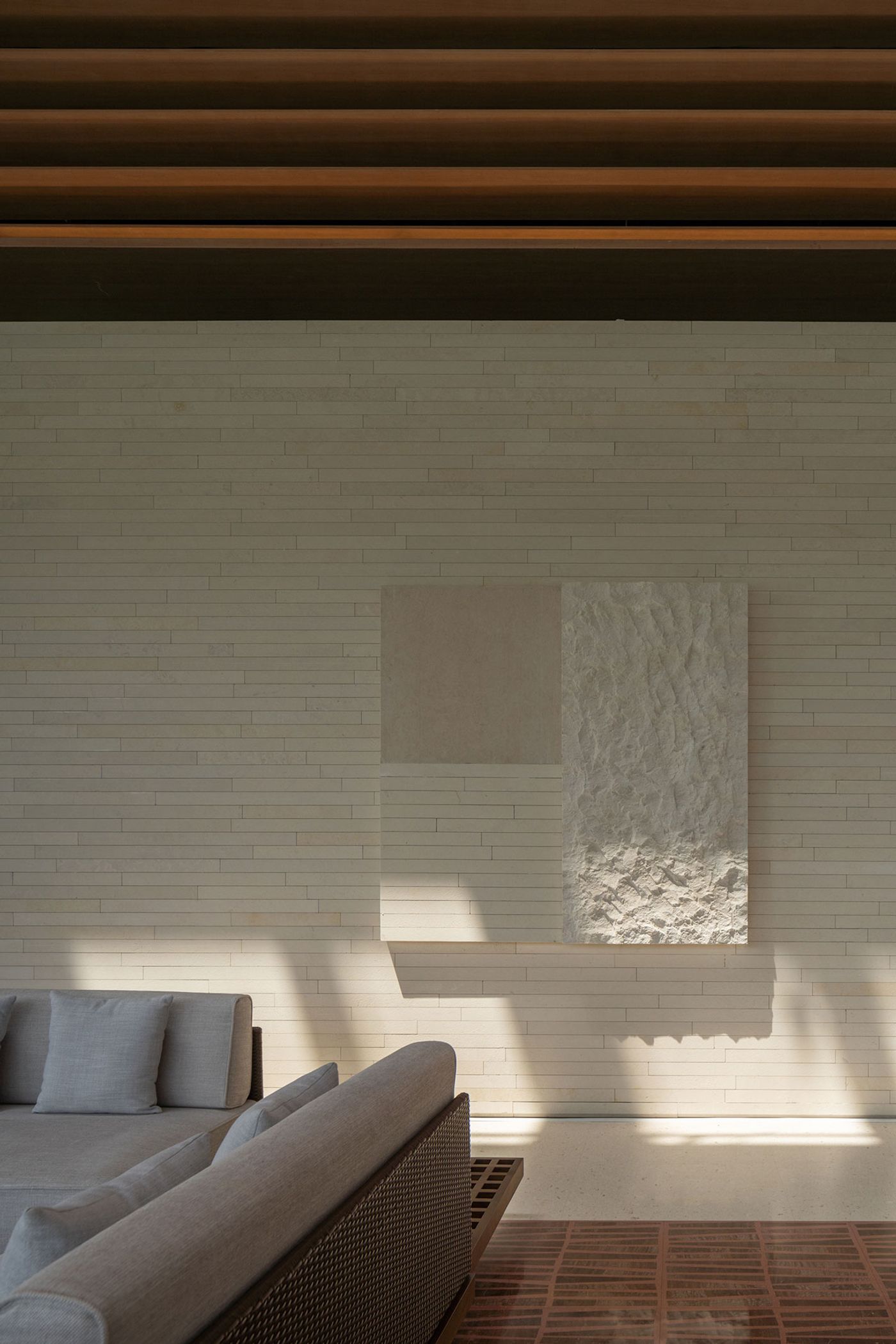
Photography by Vincent Wu.
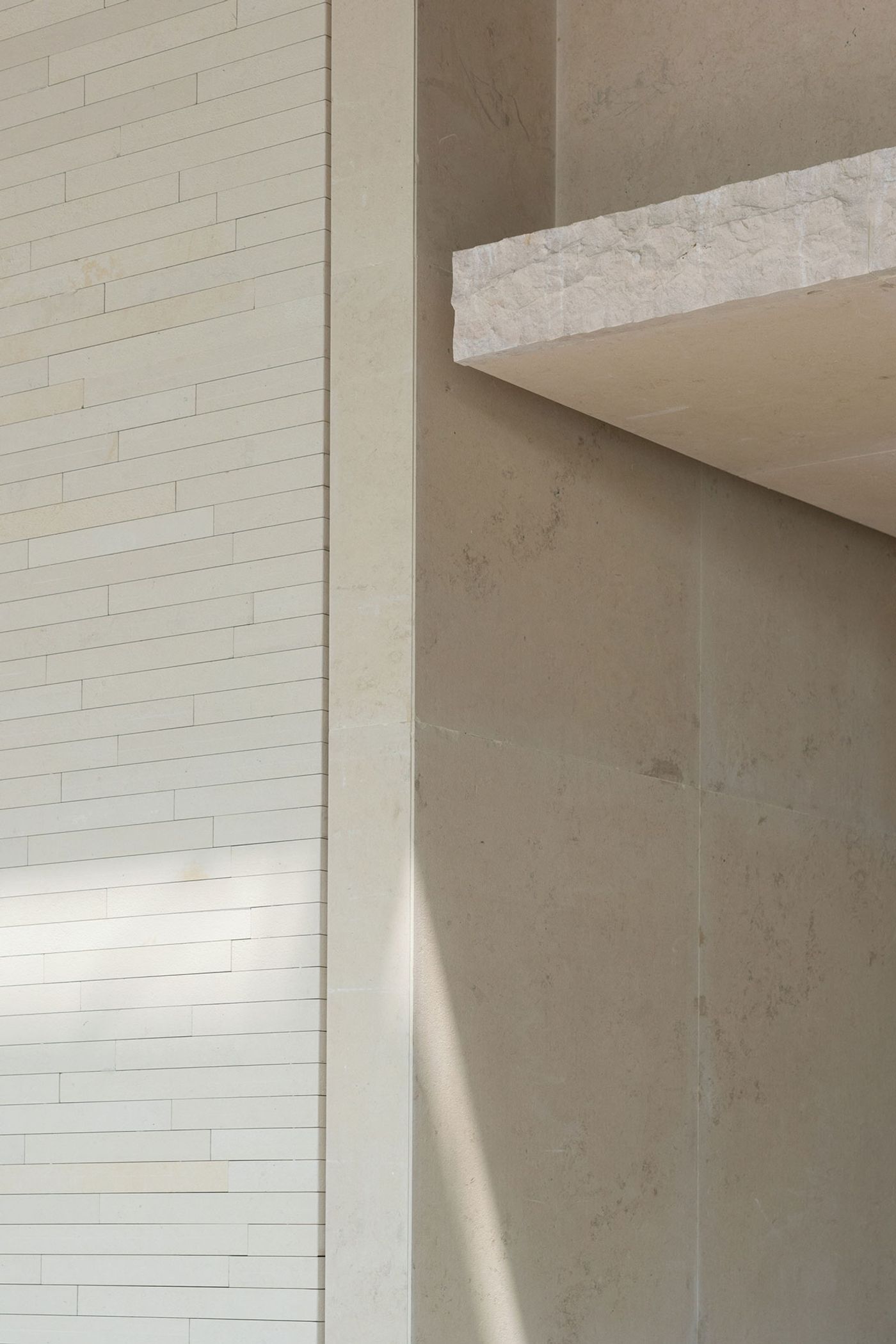
Photography by Vincent Wu.
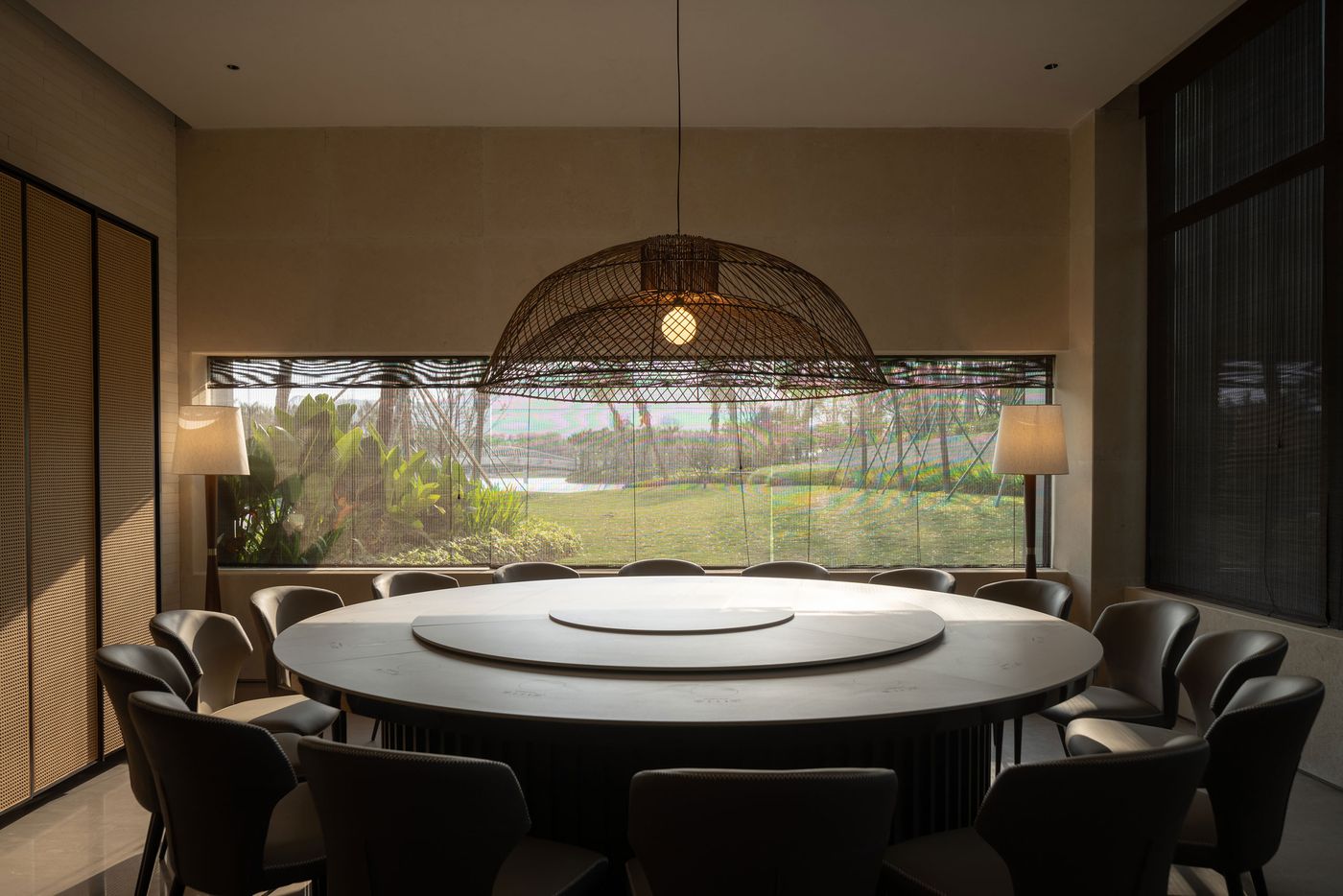
Photography by Vincent Wu.
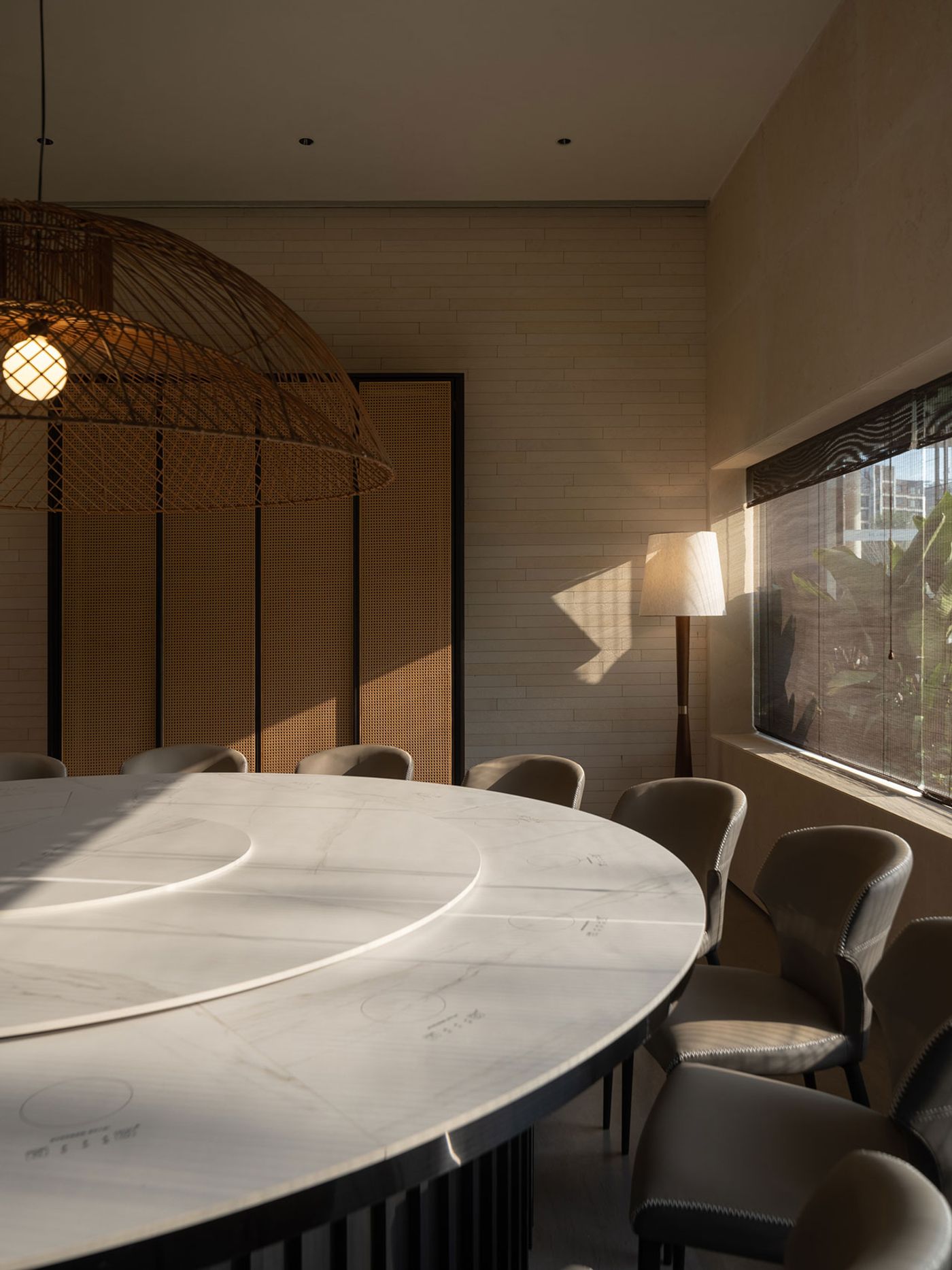
Photography by Vincent Wu.
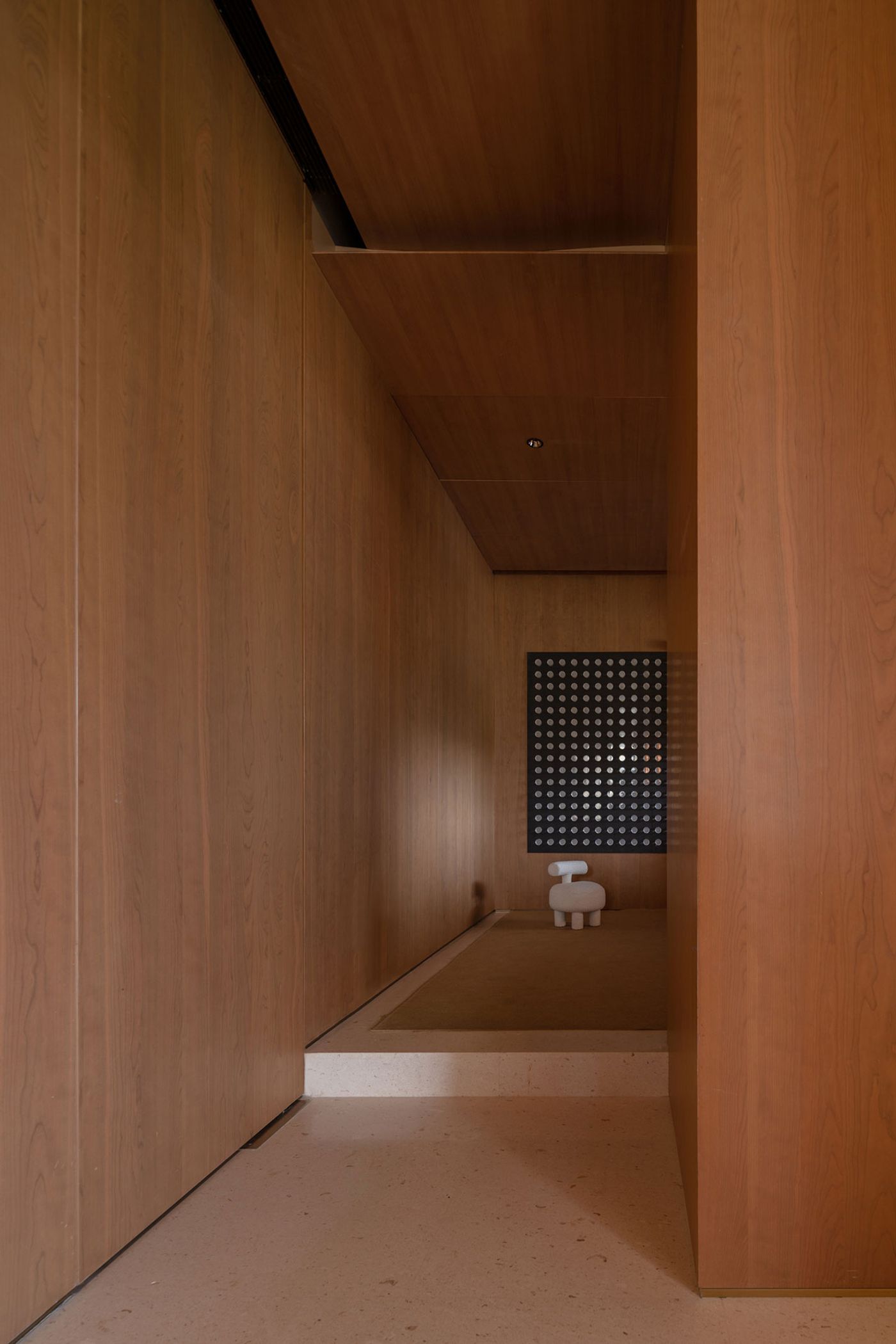
Photography by Vincent Wu.
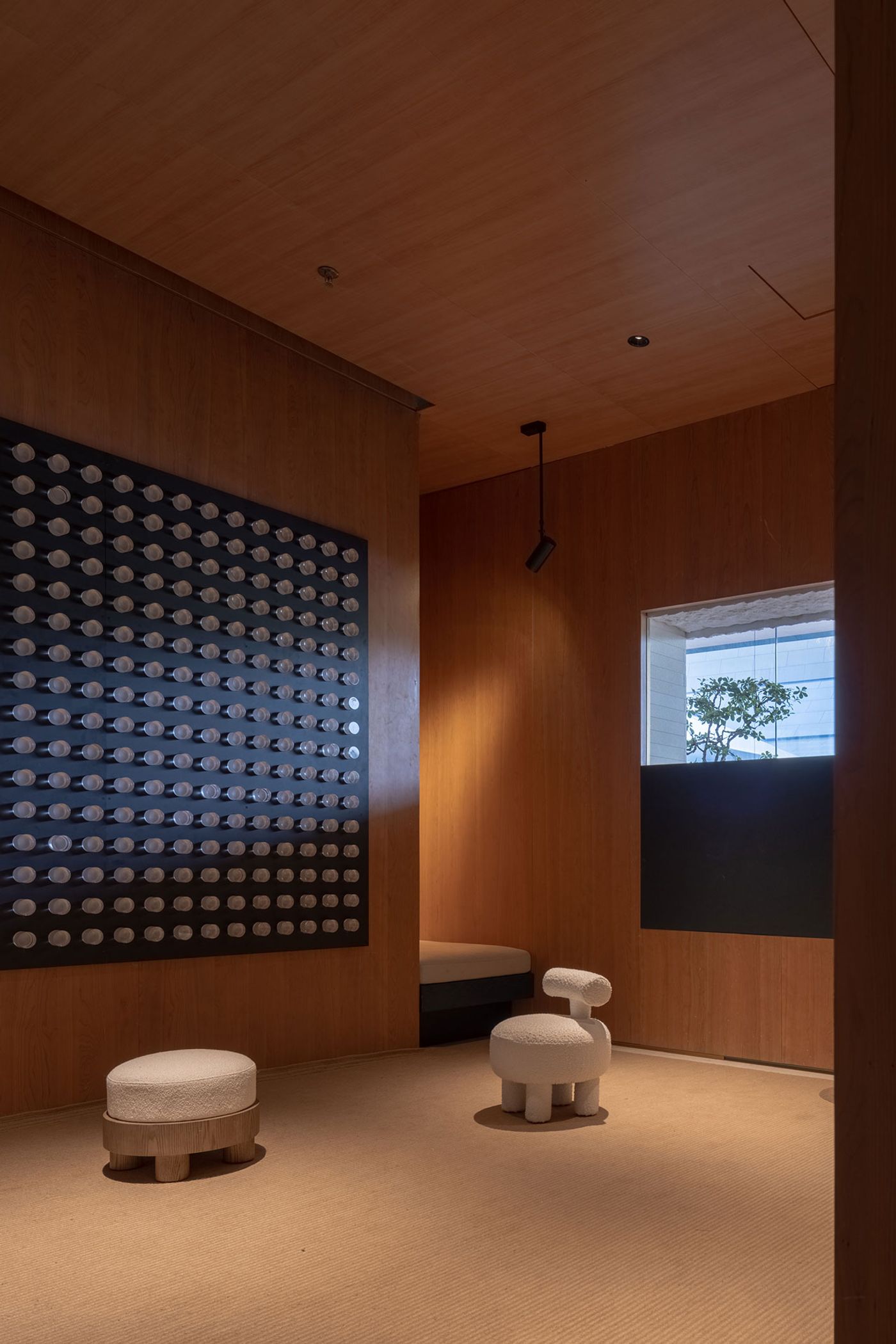
Photography by Vincent Wu.
